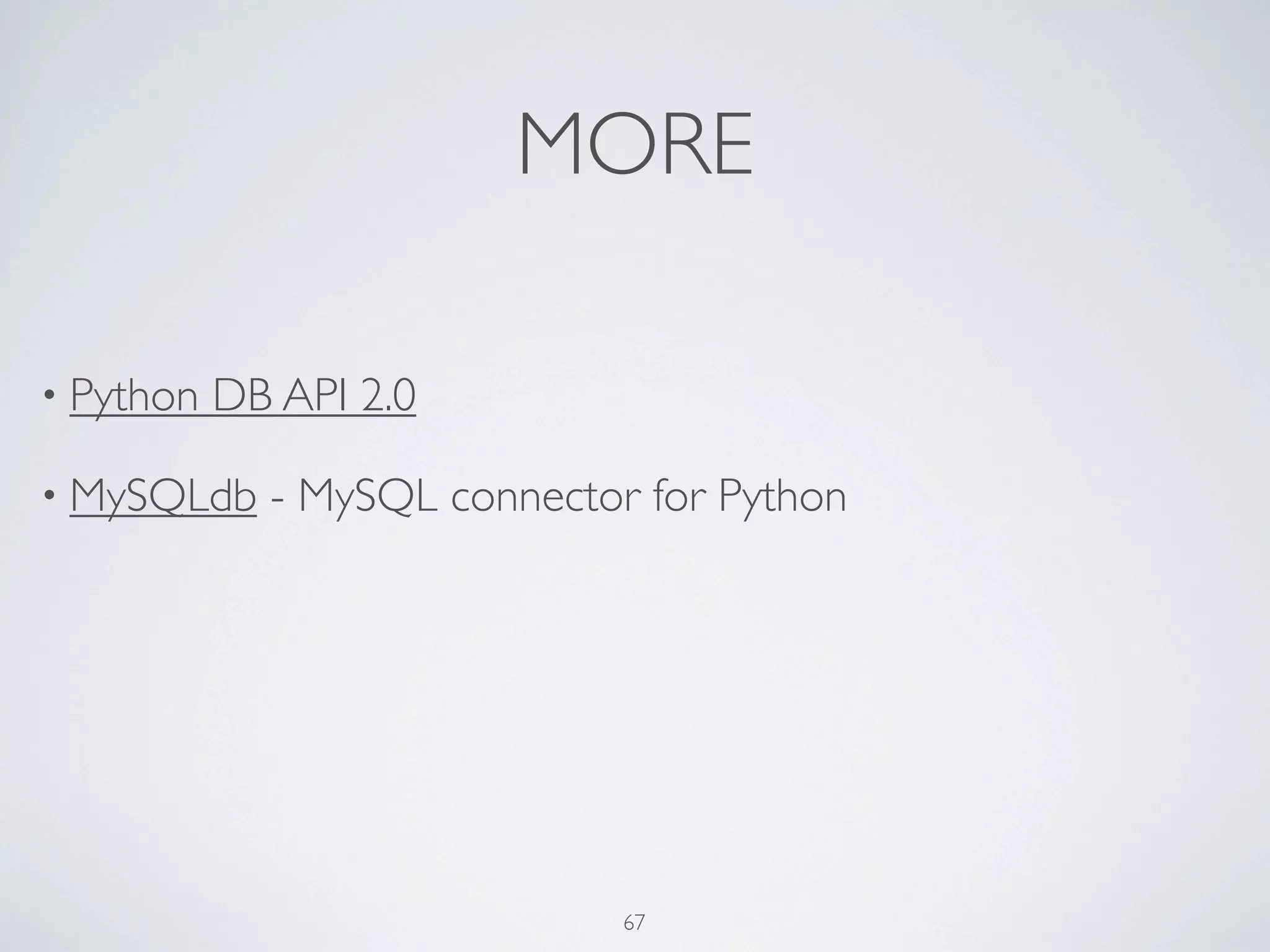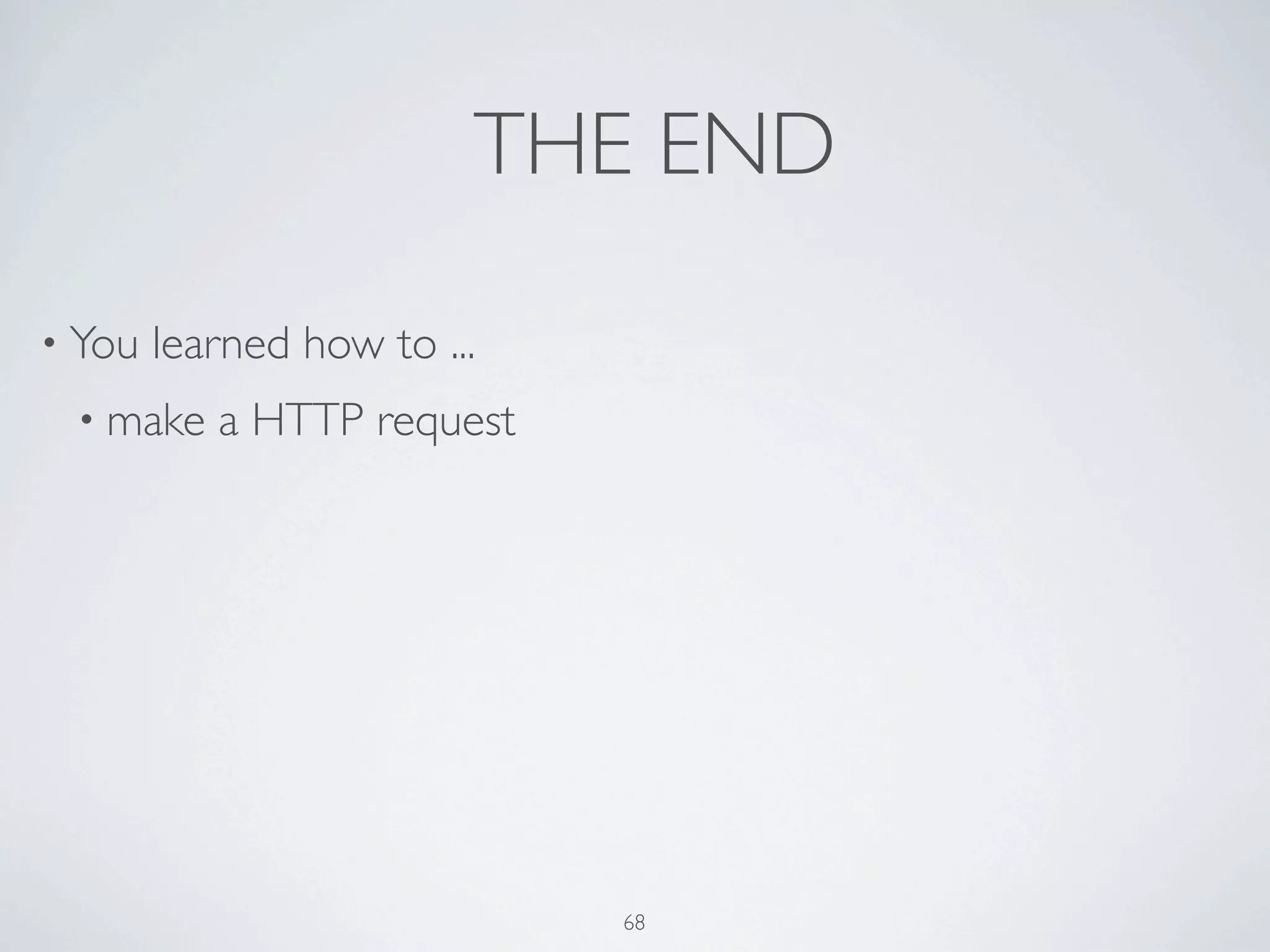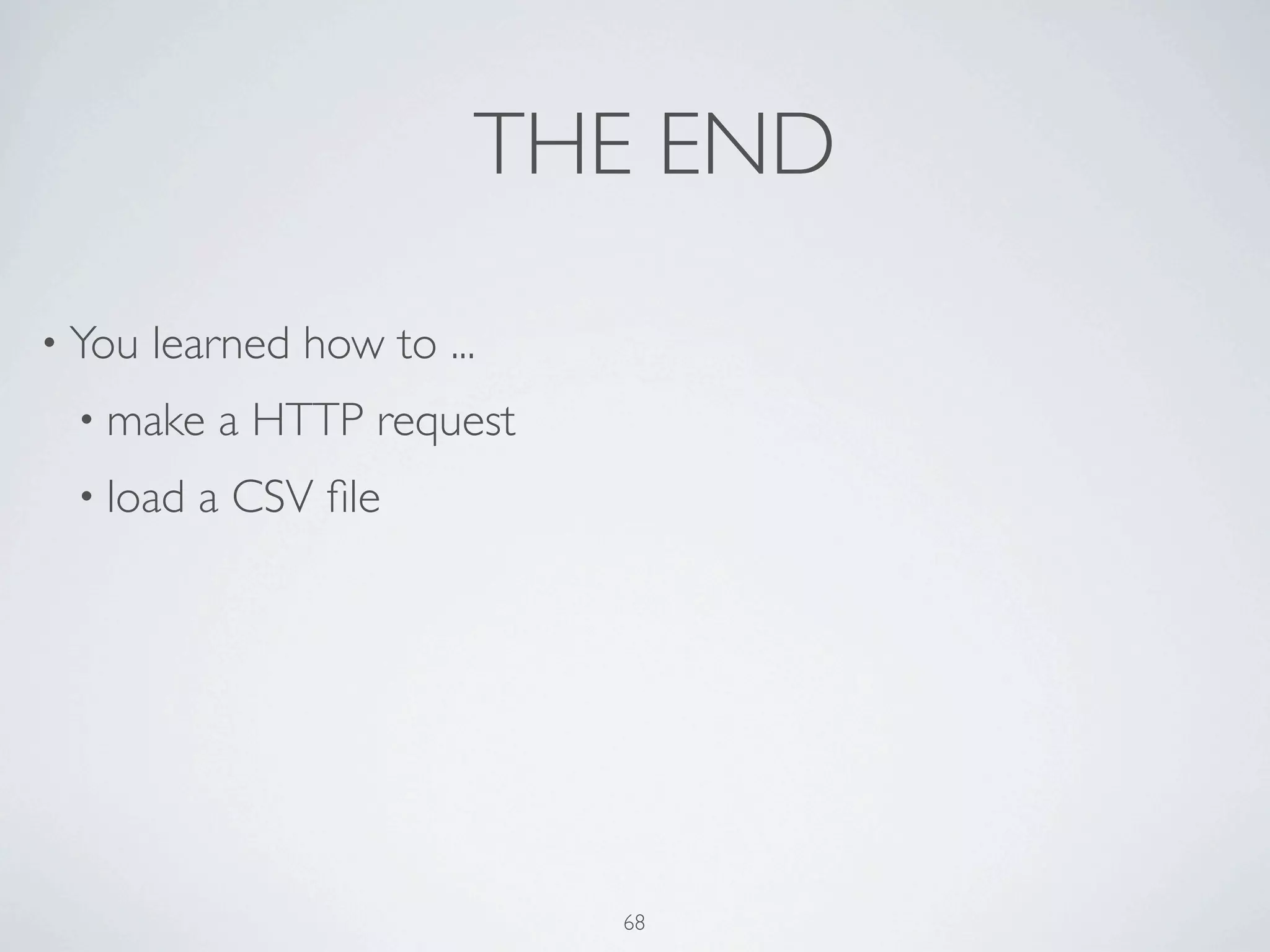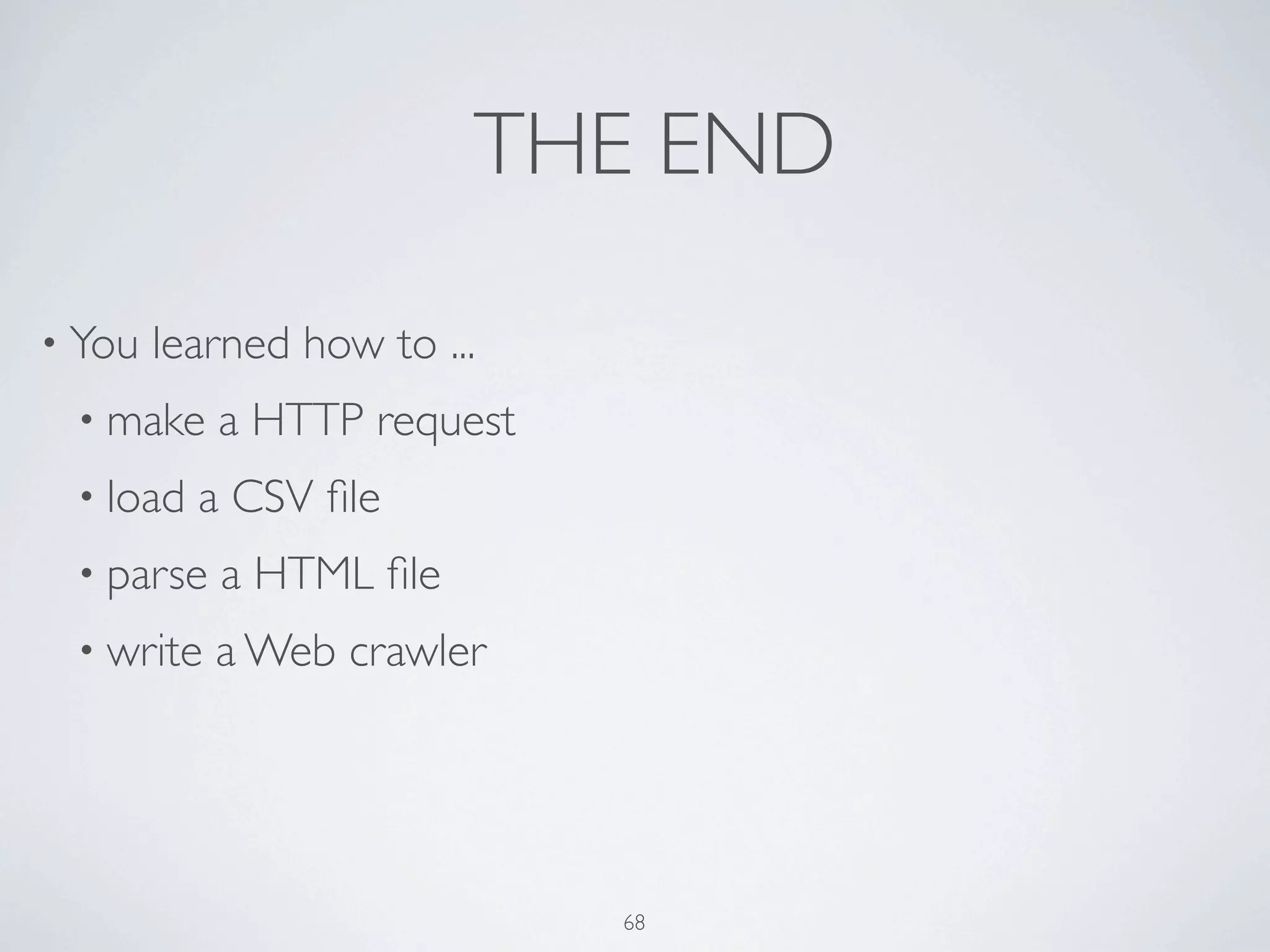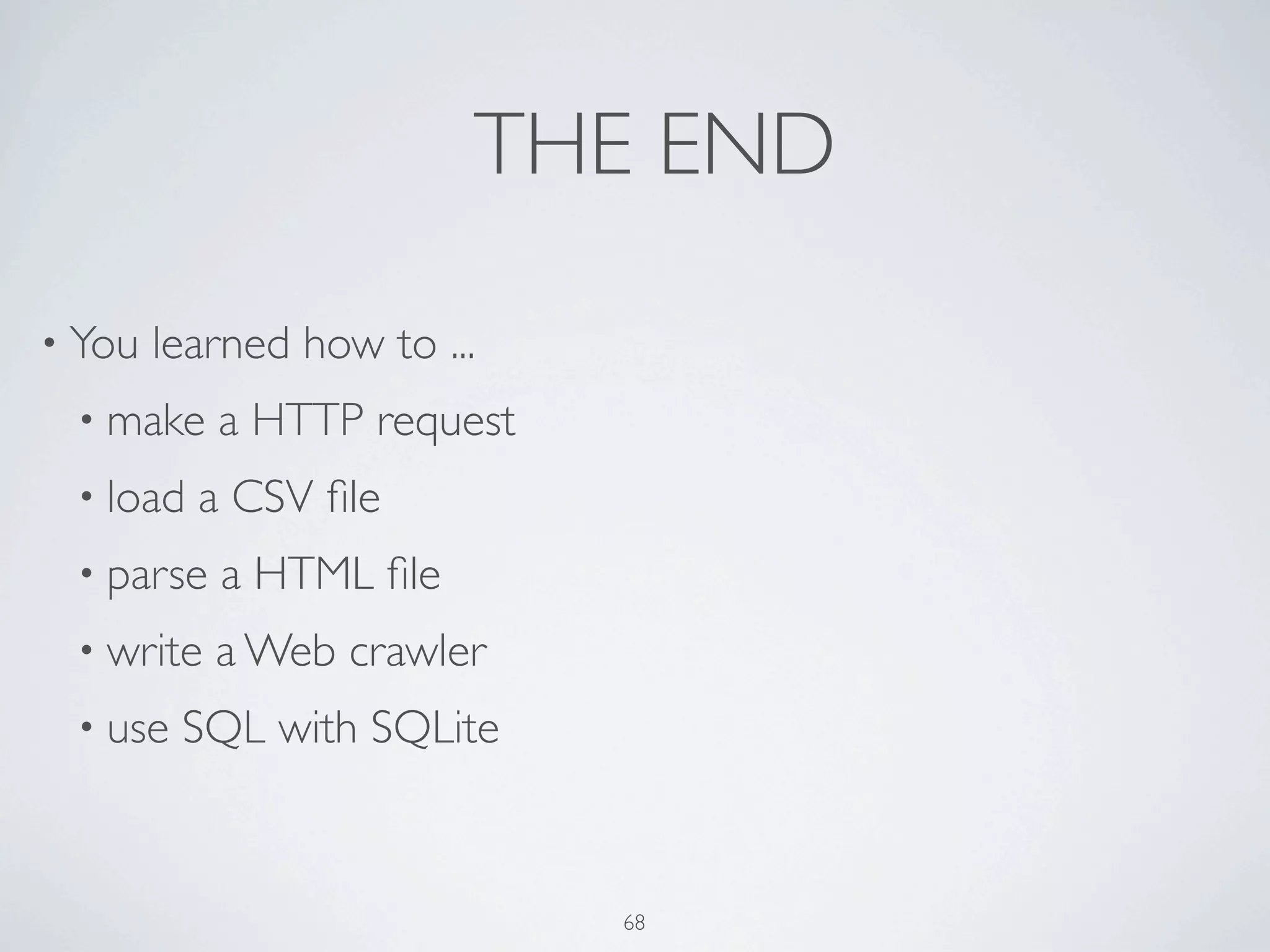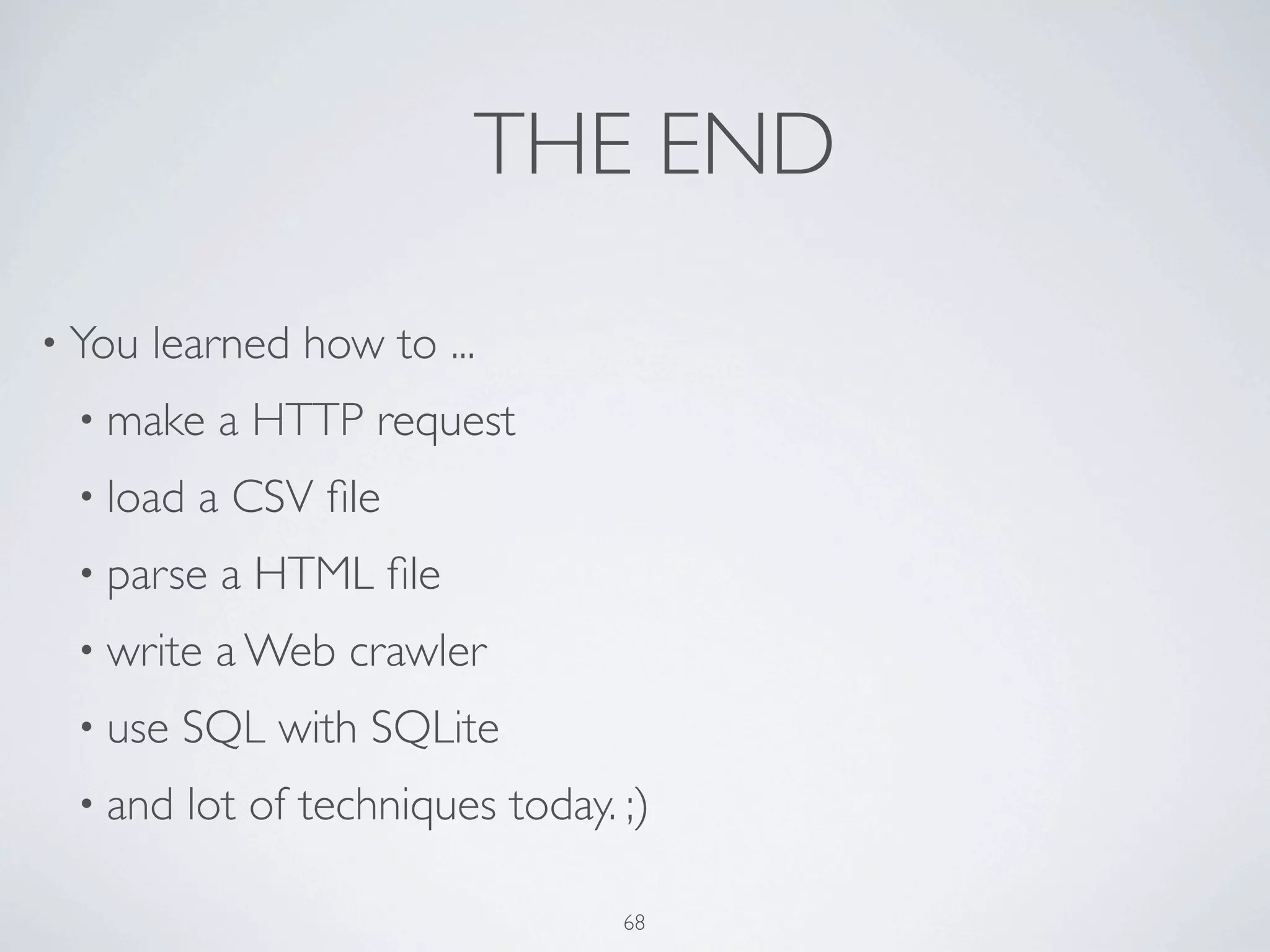The document provides a comprehensive guide to learning Python, including resources, fundamental concepts, and practical examples. It covers installation procedures, essential libraries, web scraping, and database interactions using SQLite, along with code samples for hands-on learning. Additionally, it offers recommendations for books and online documentation to enhance learners' understanding of Python programming.
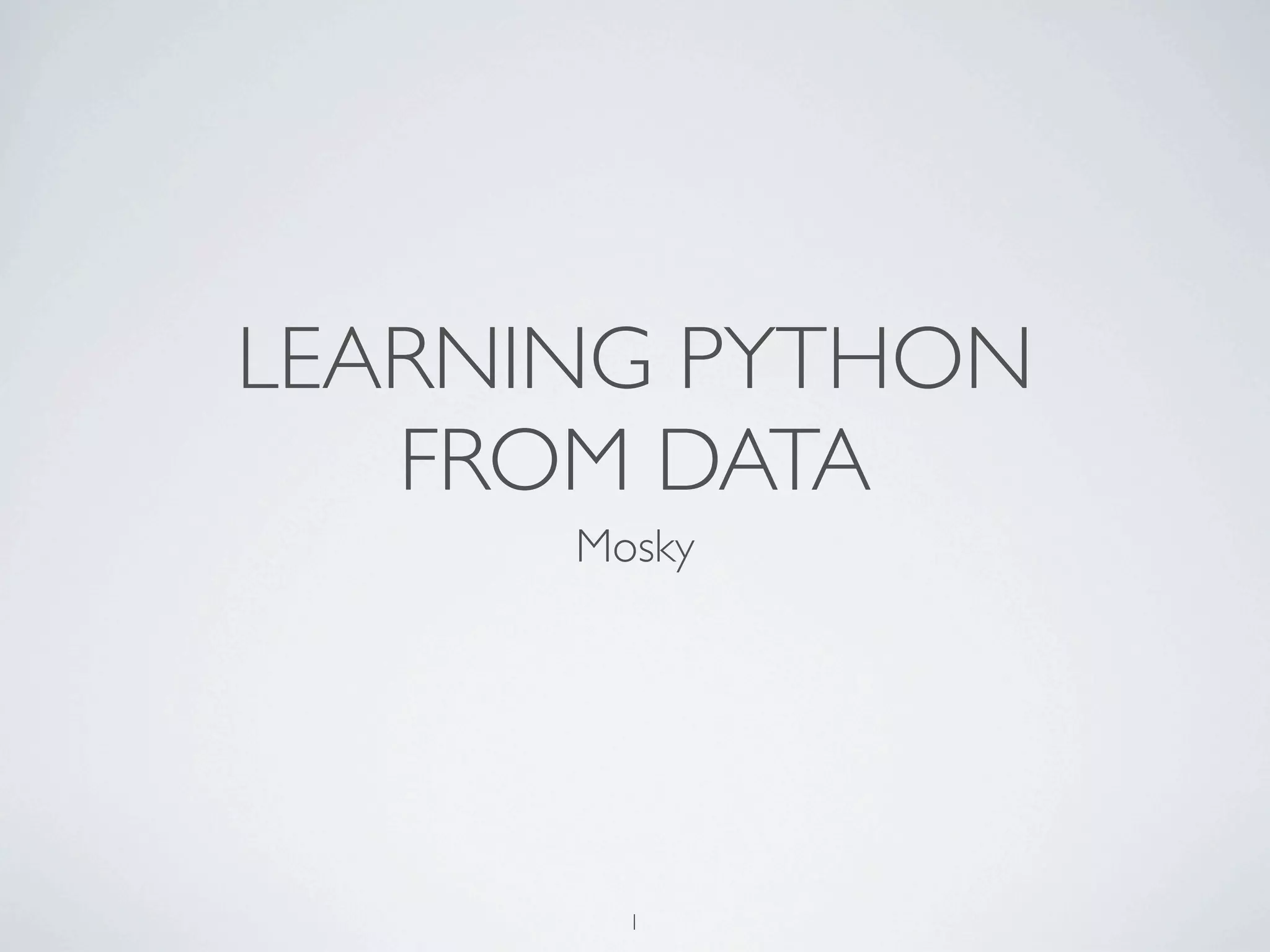
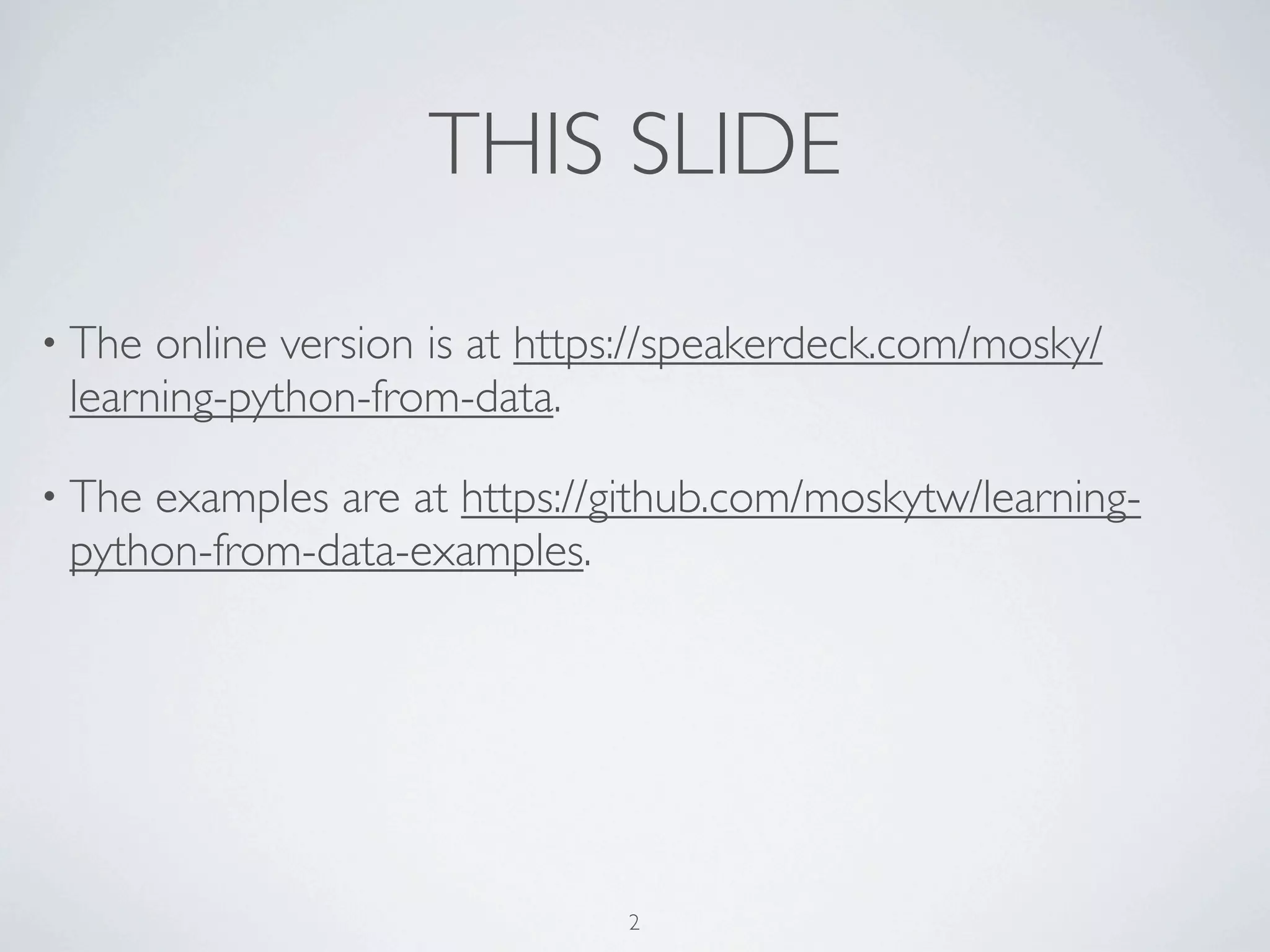







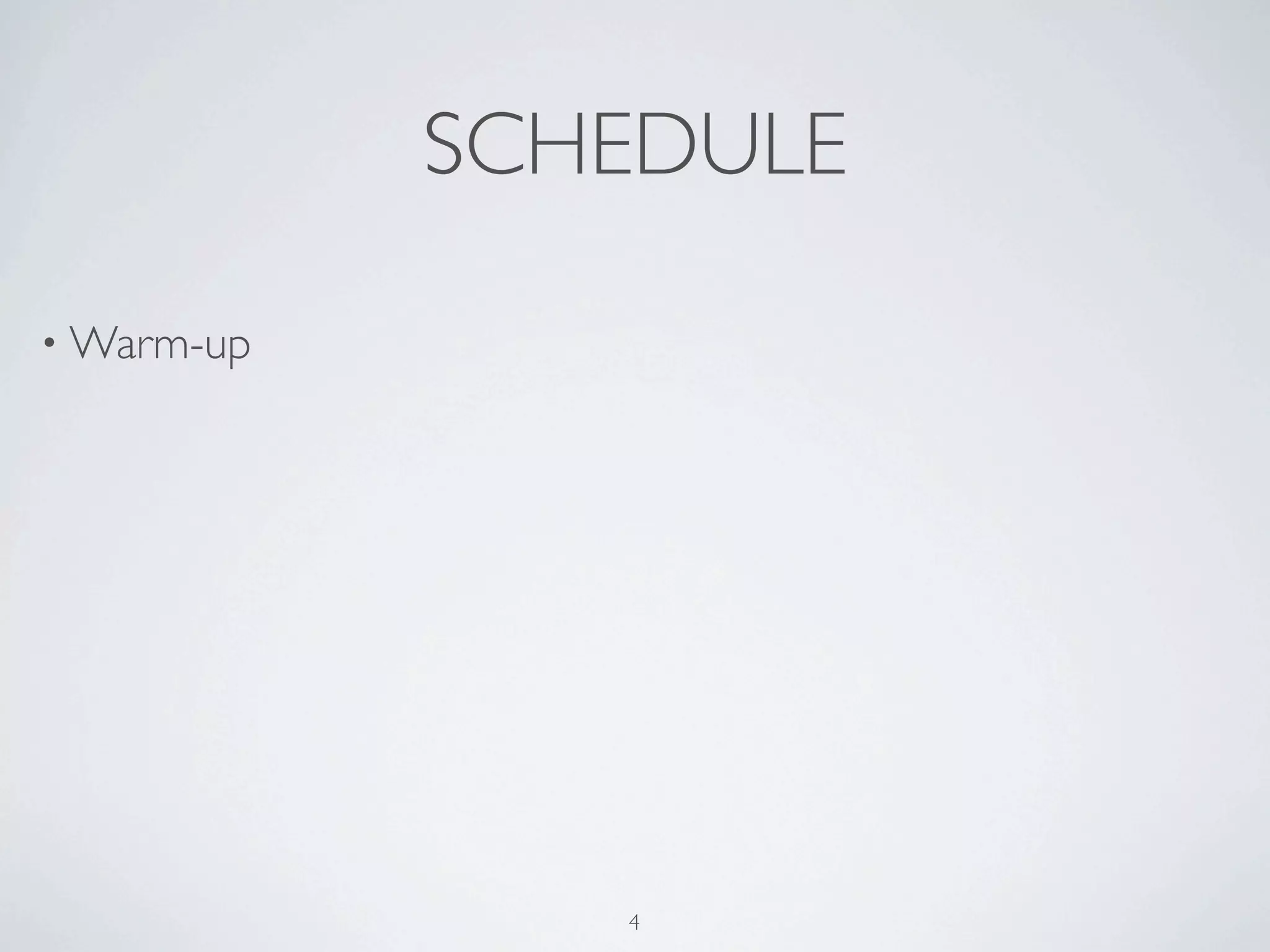
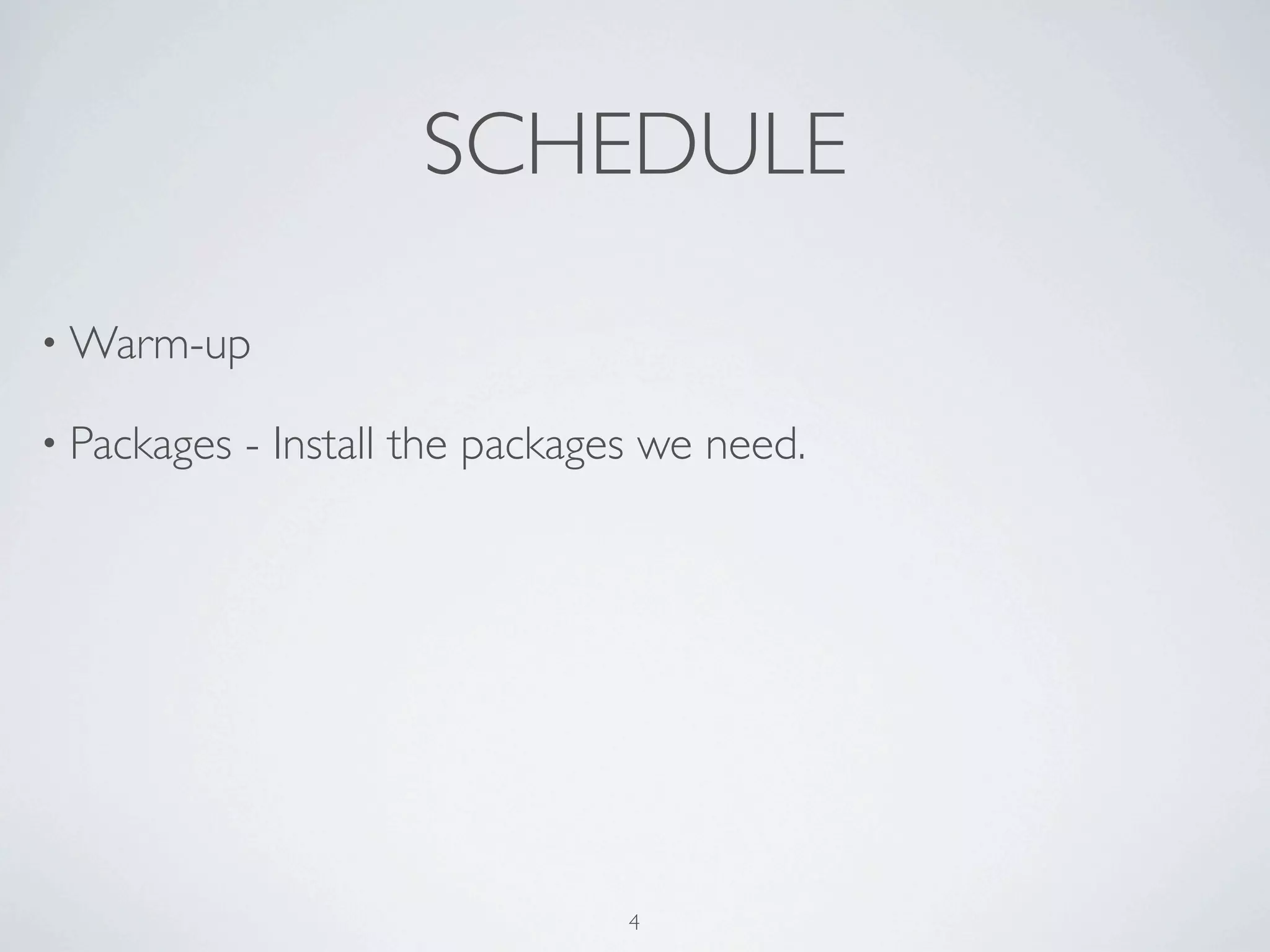
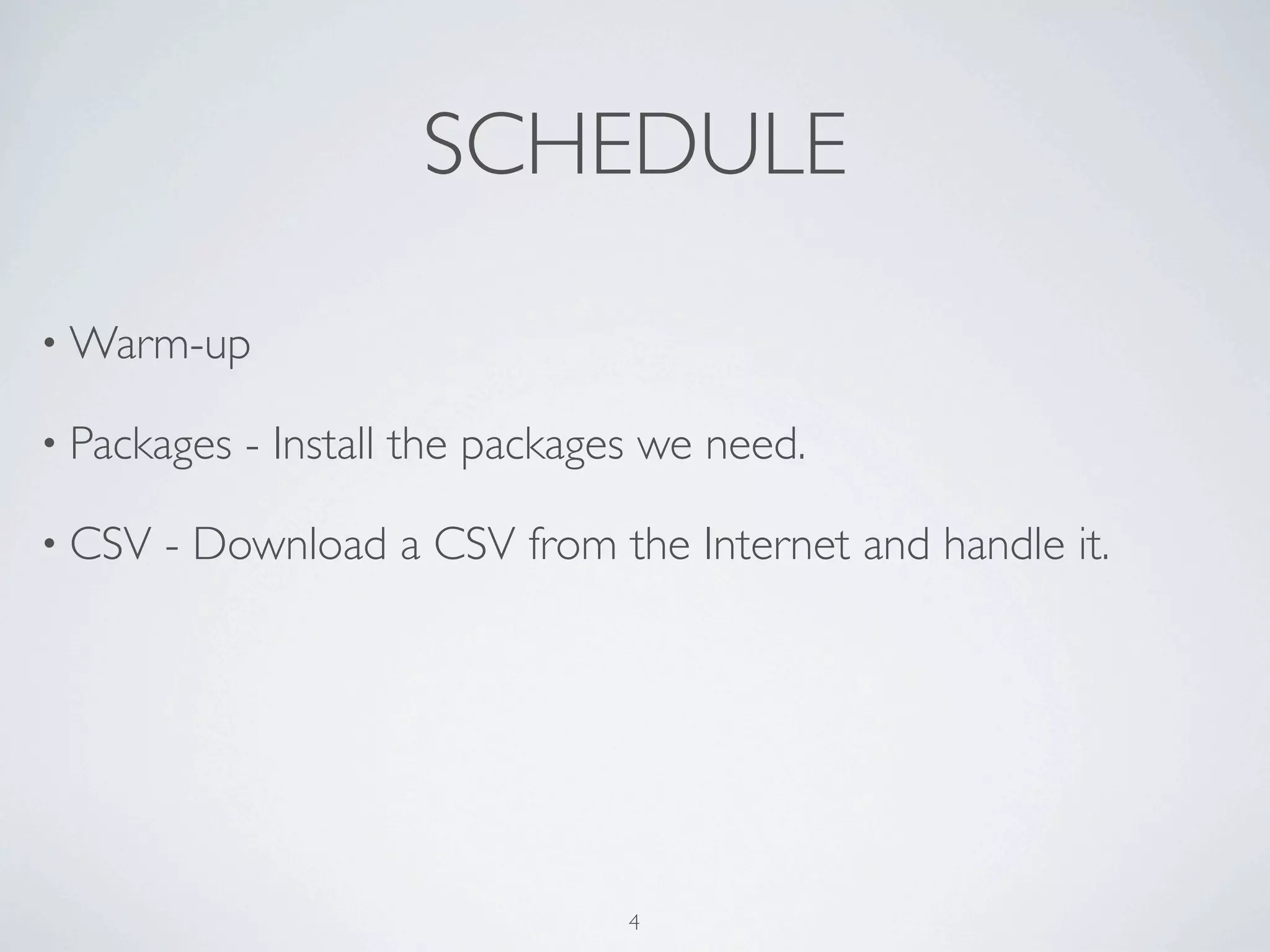
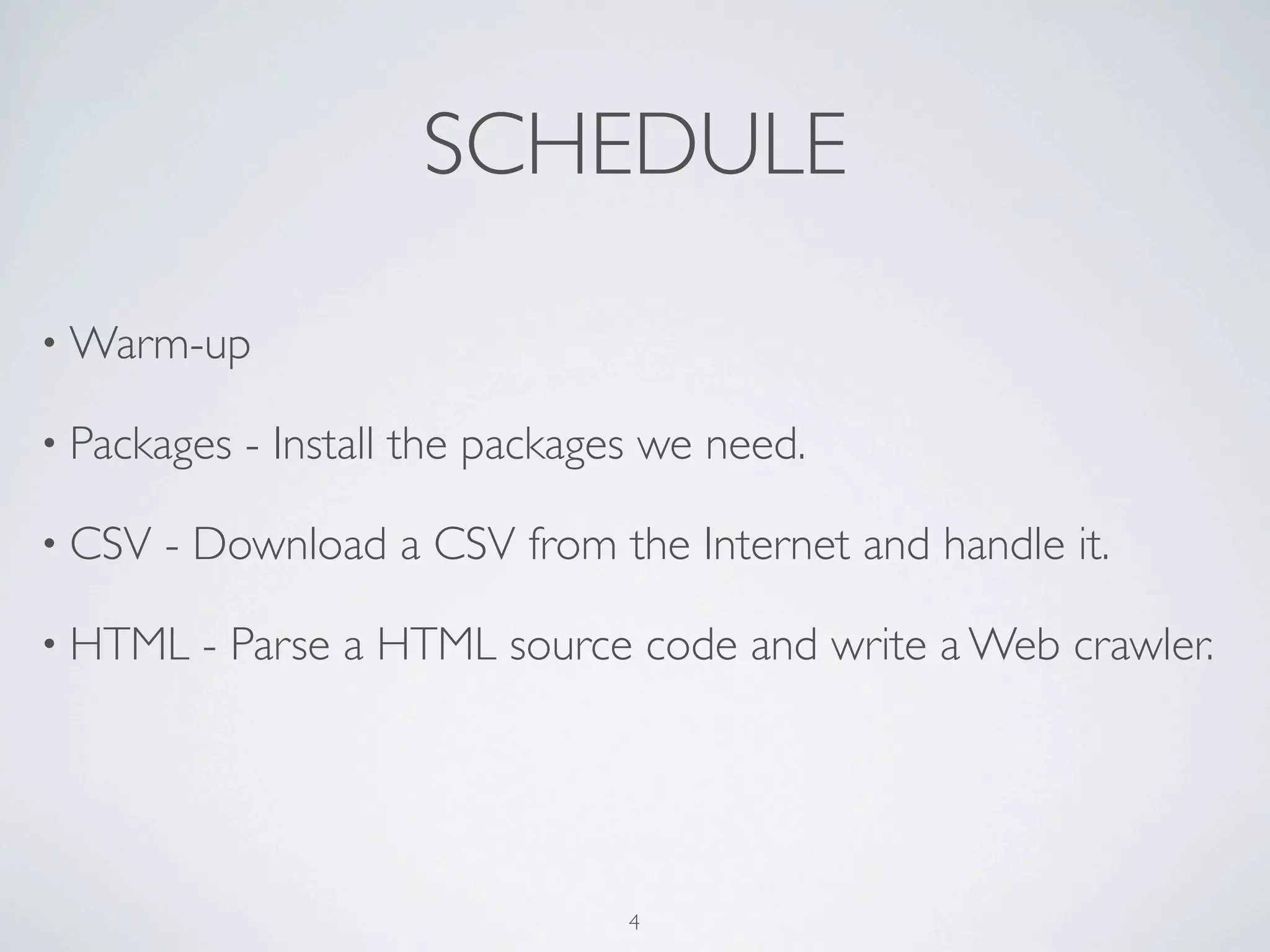
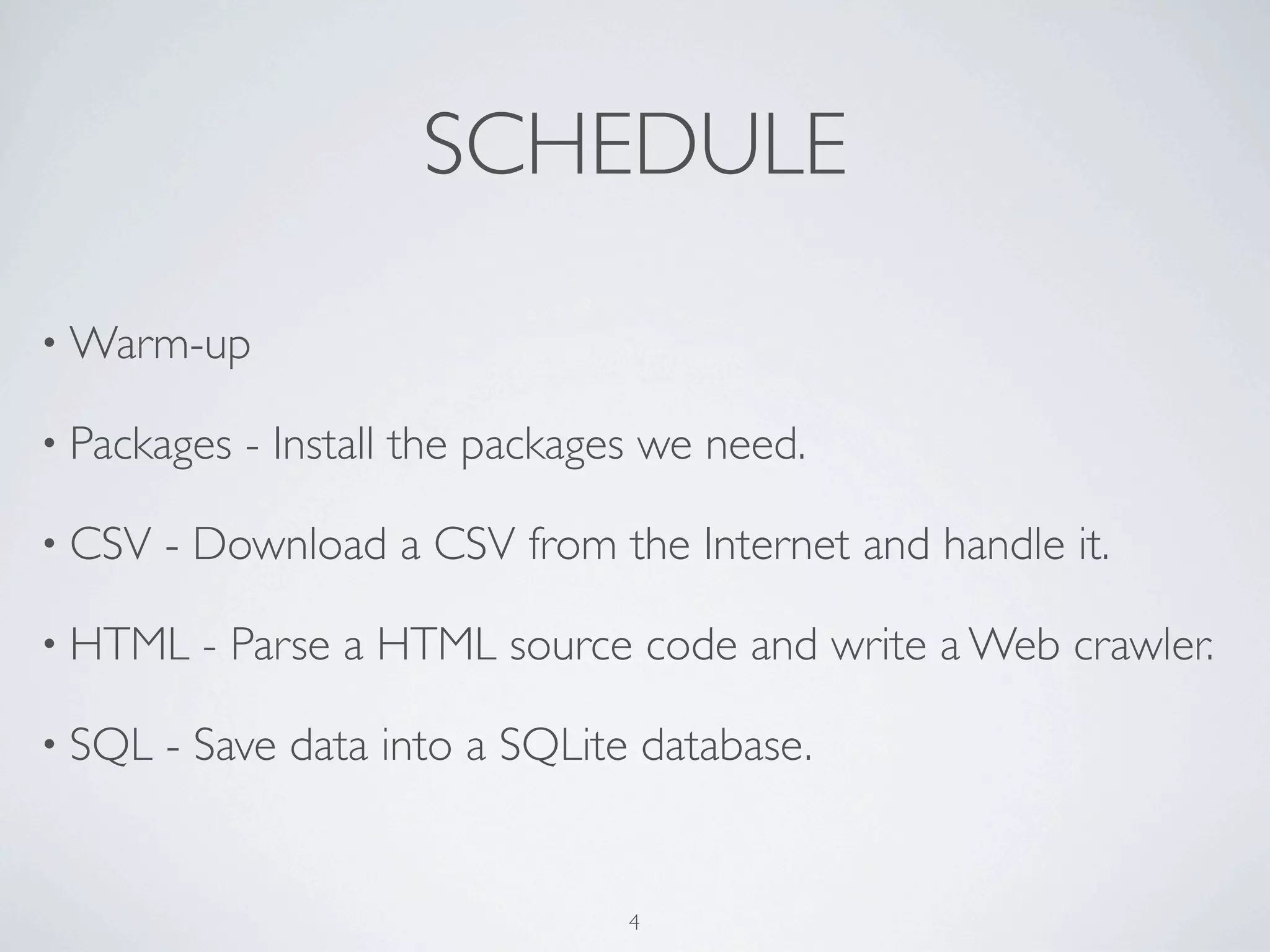
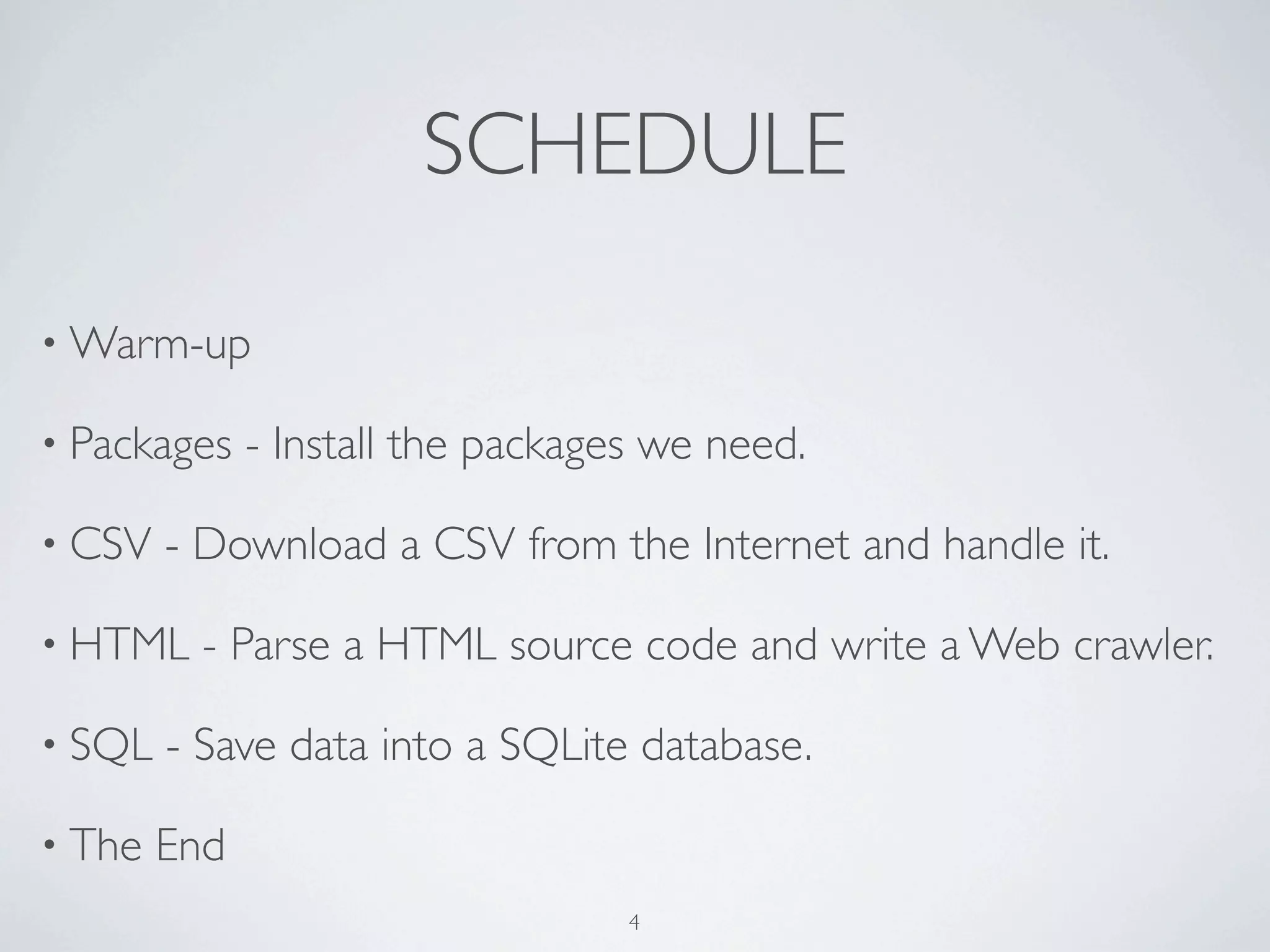


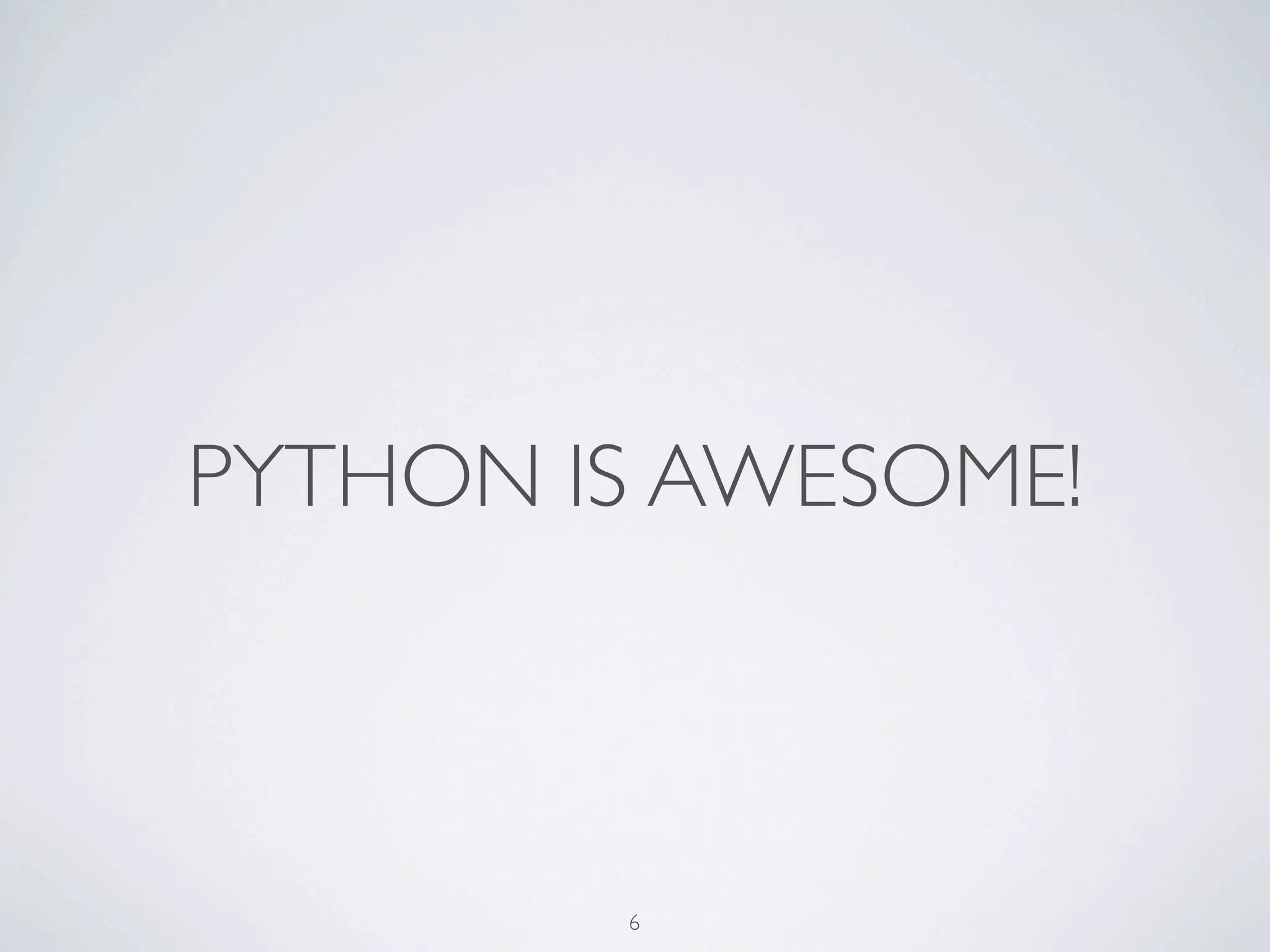

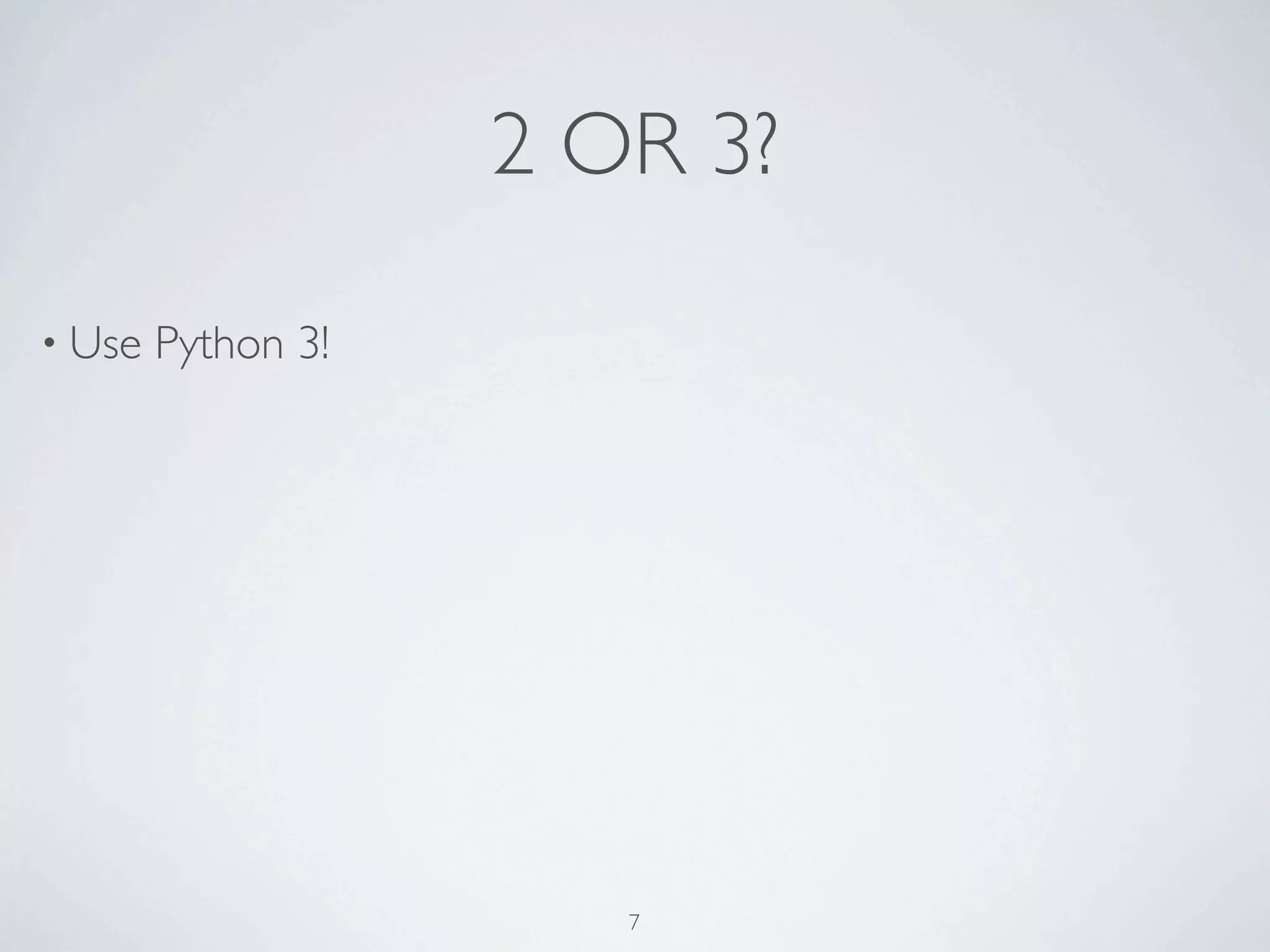
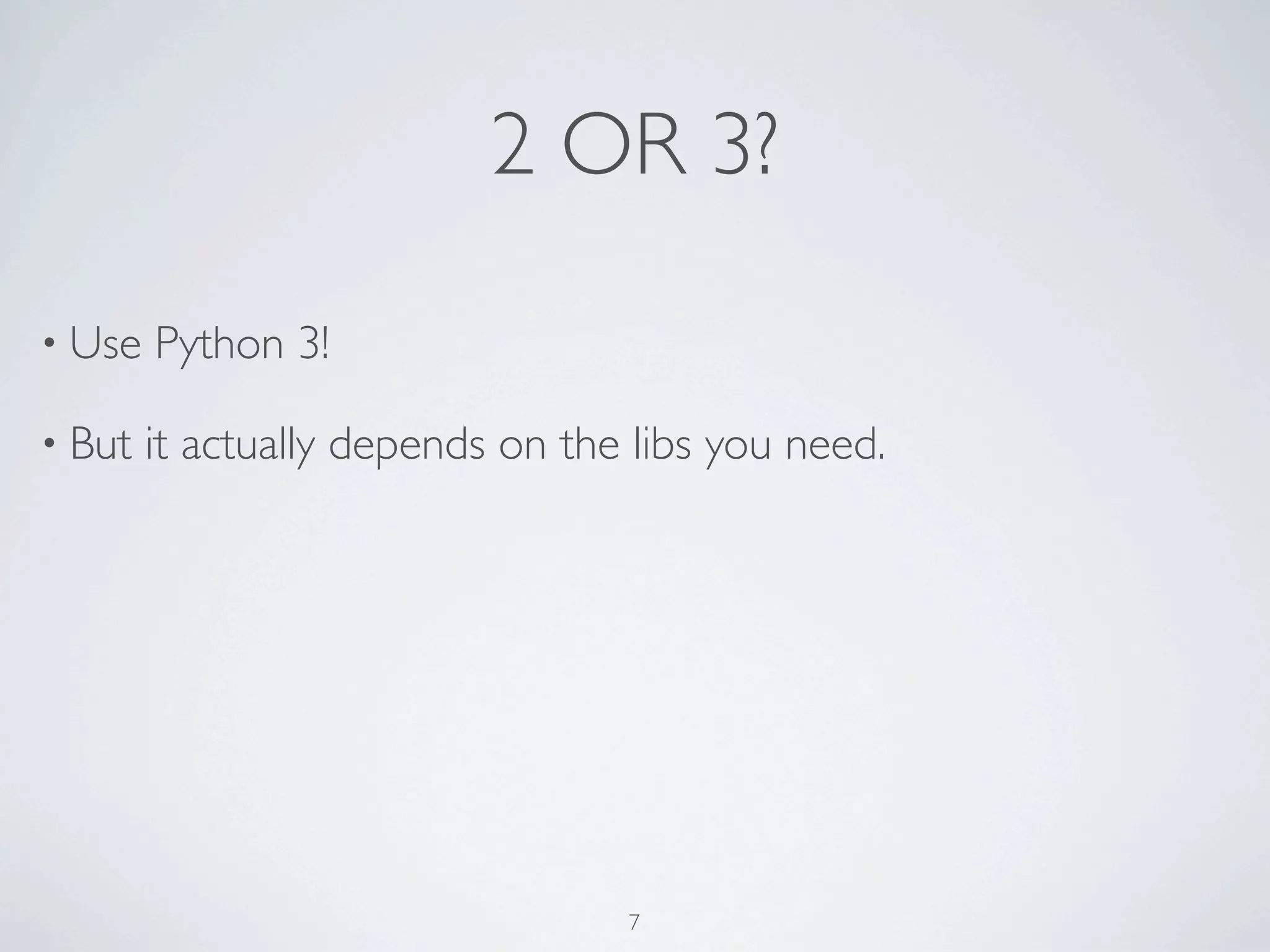
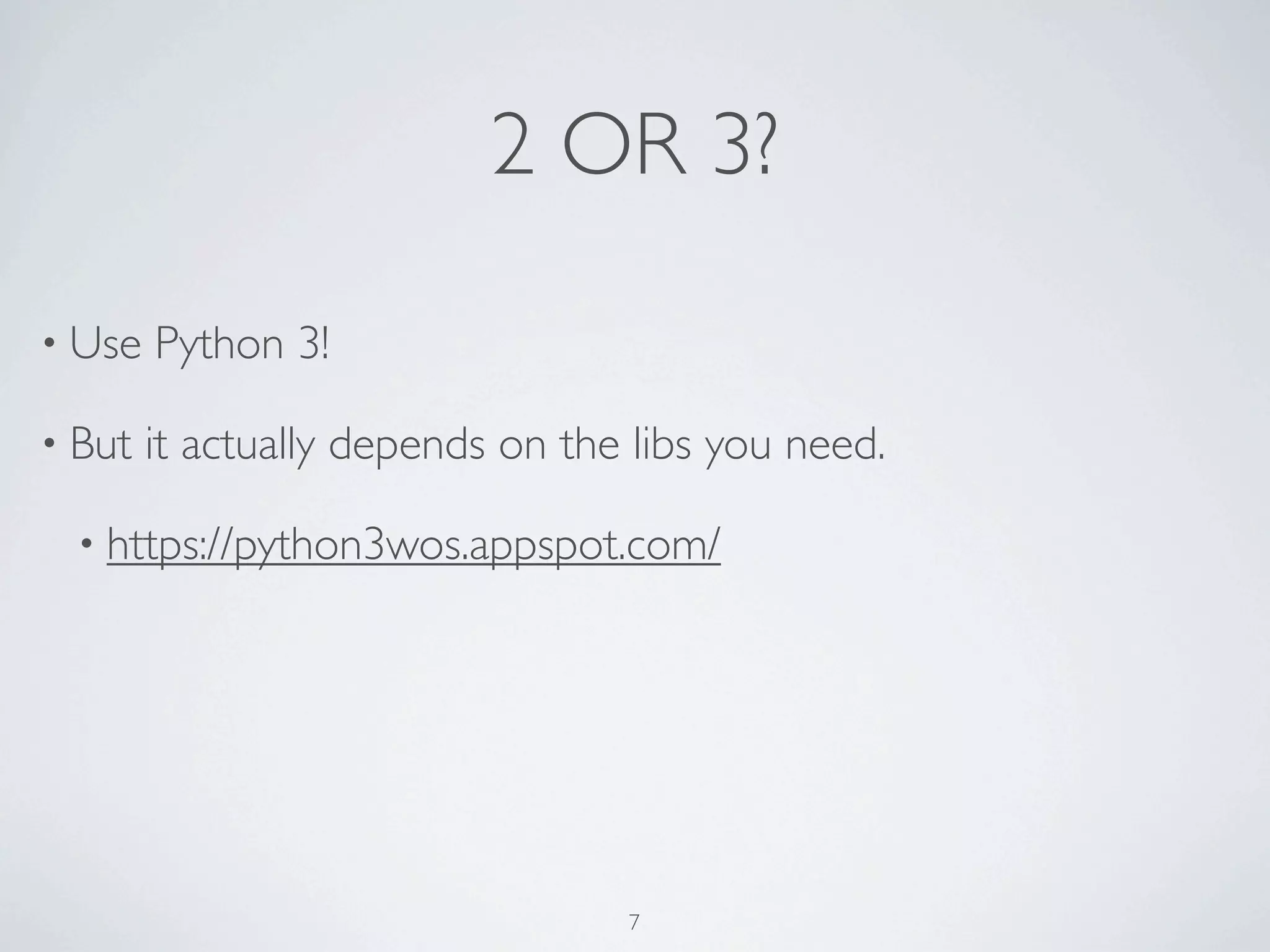


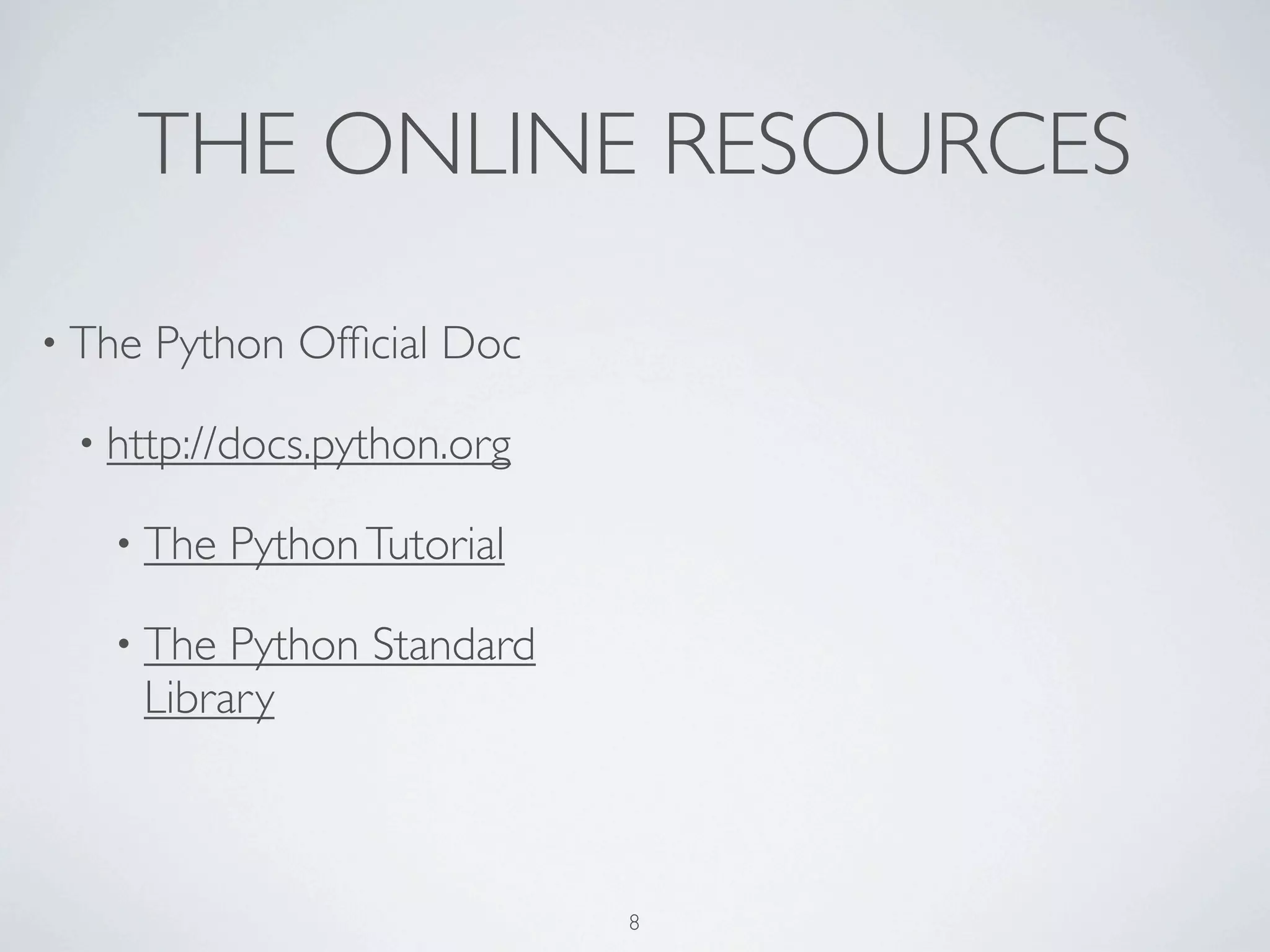
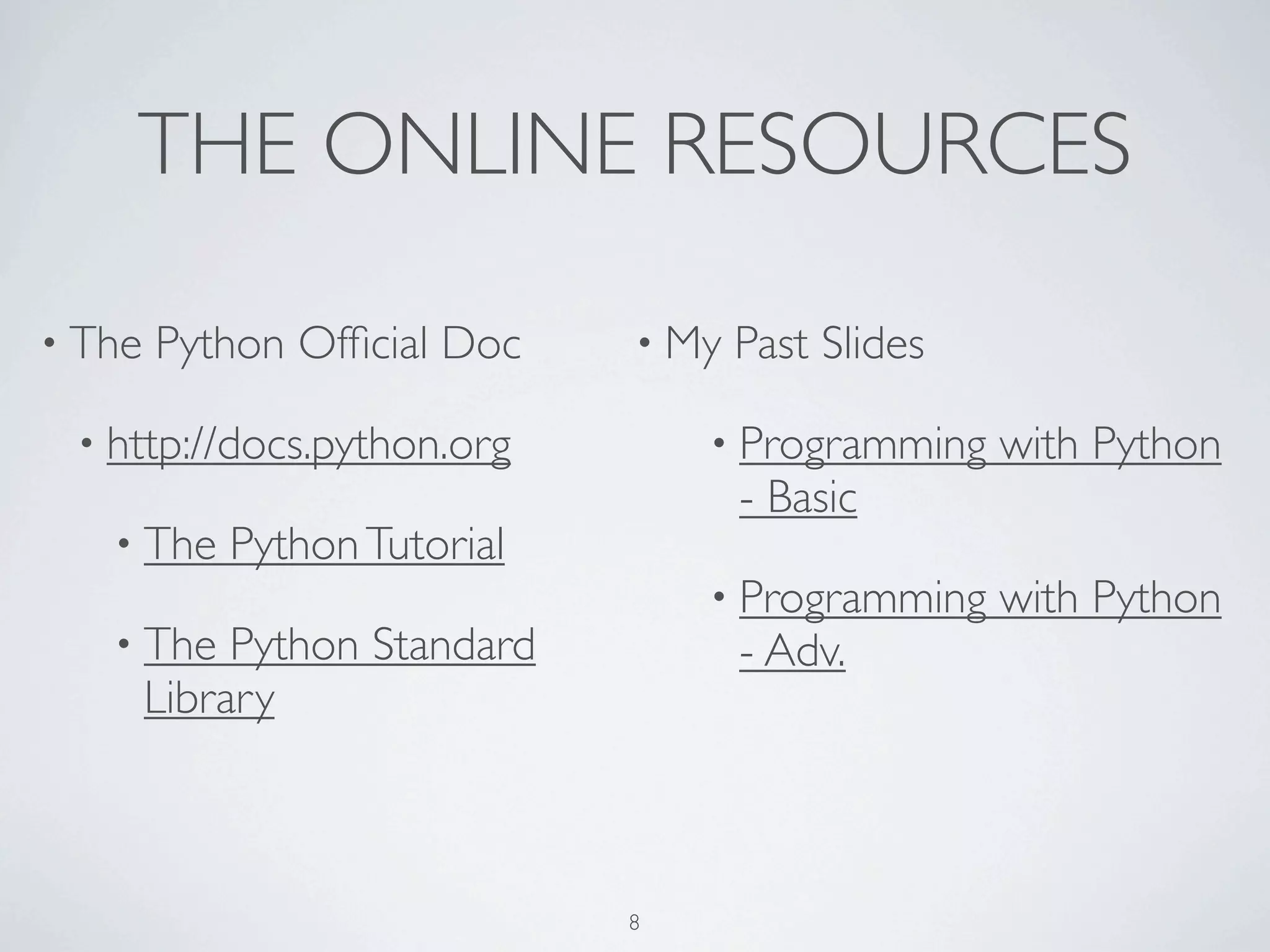


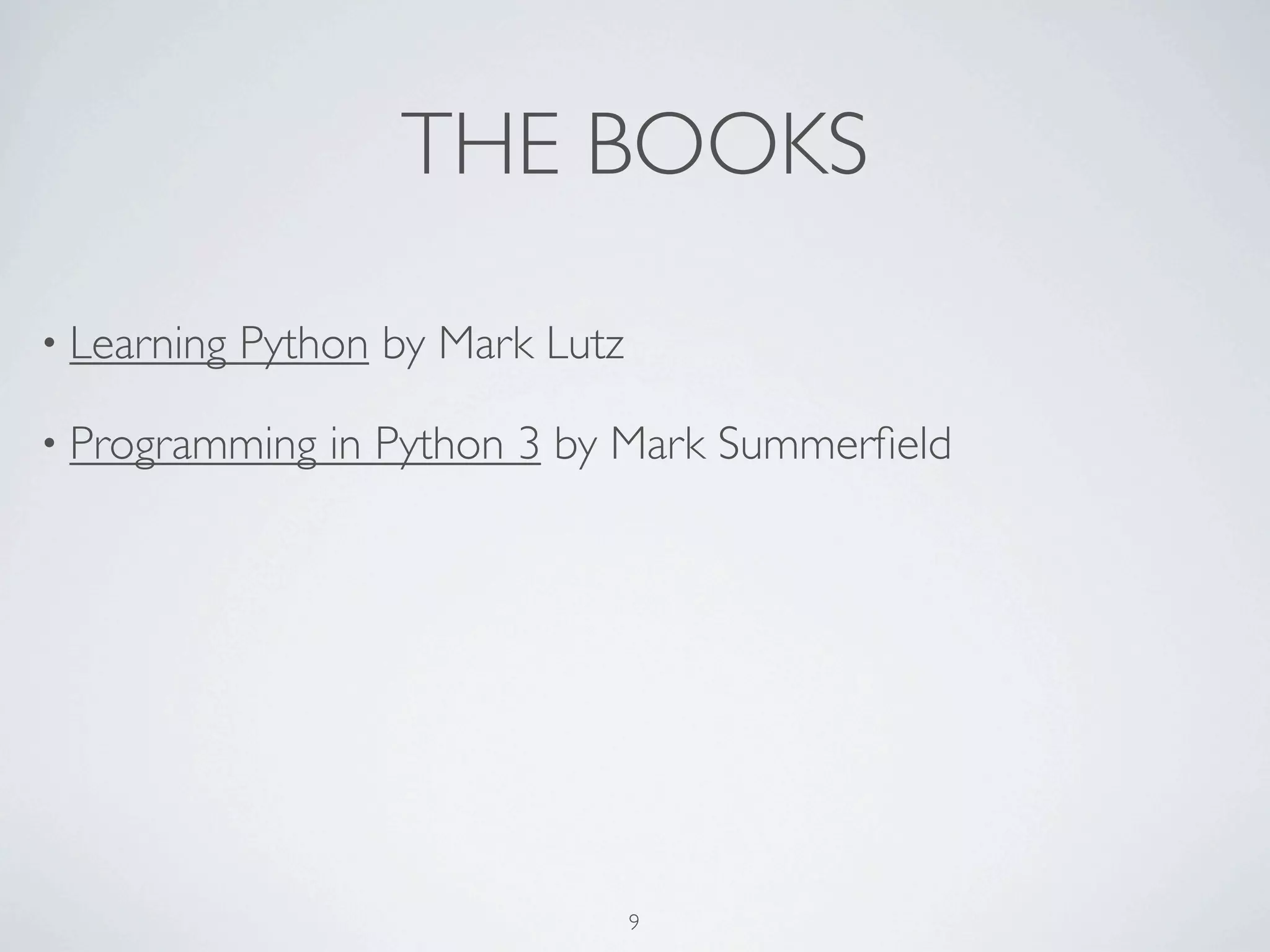
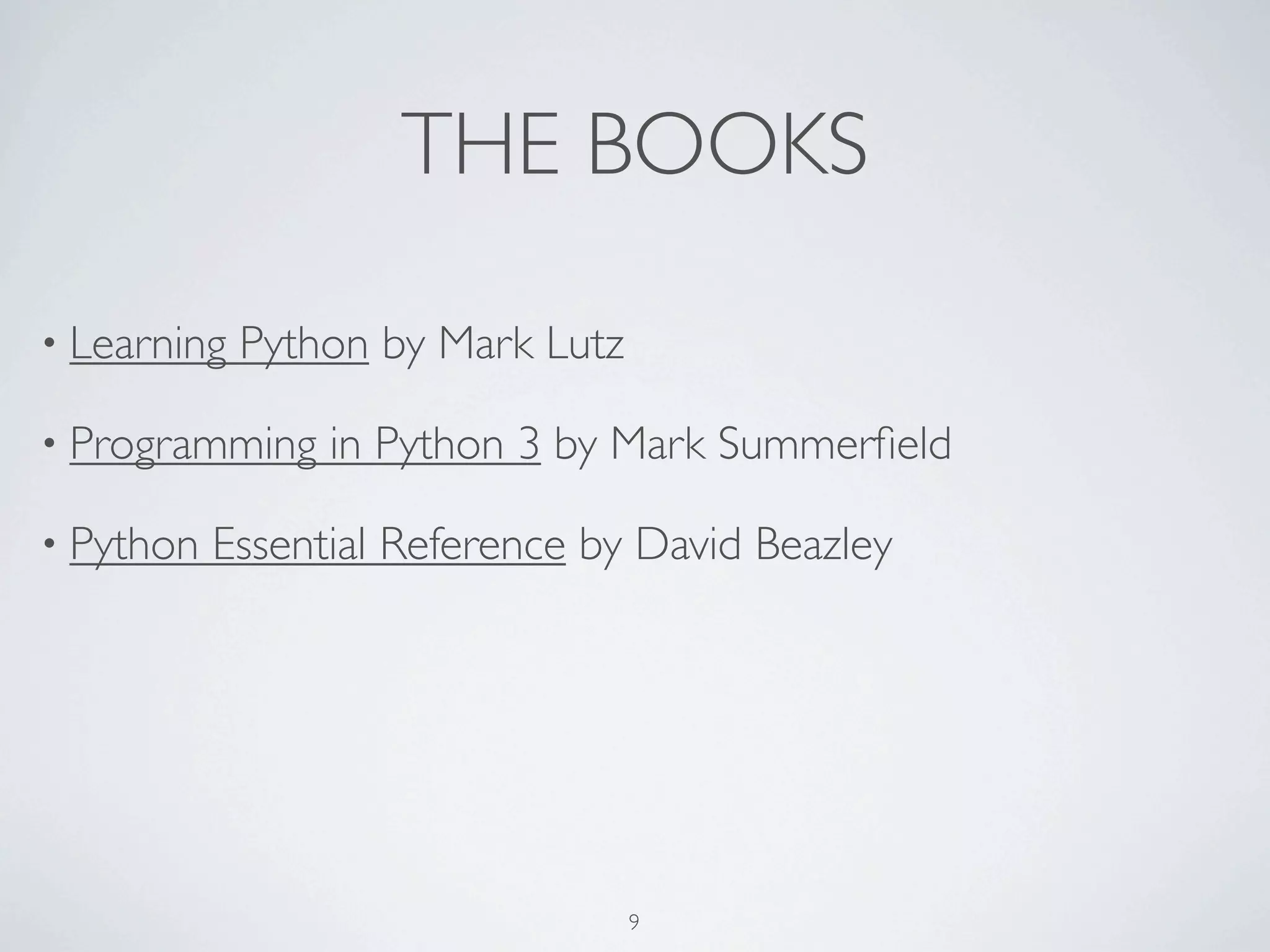

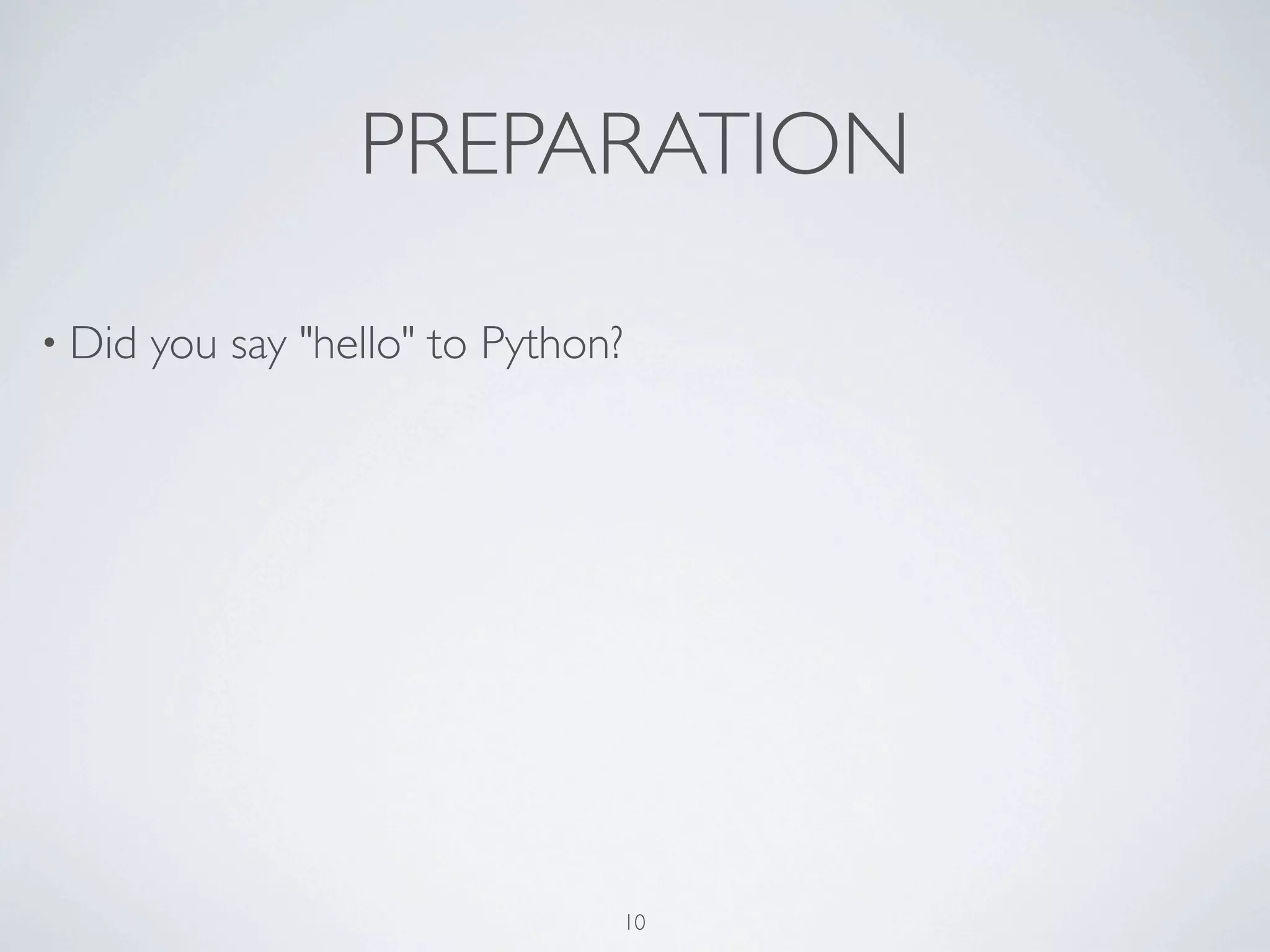
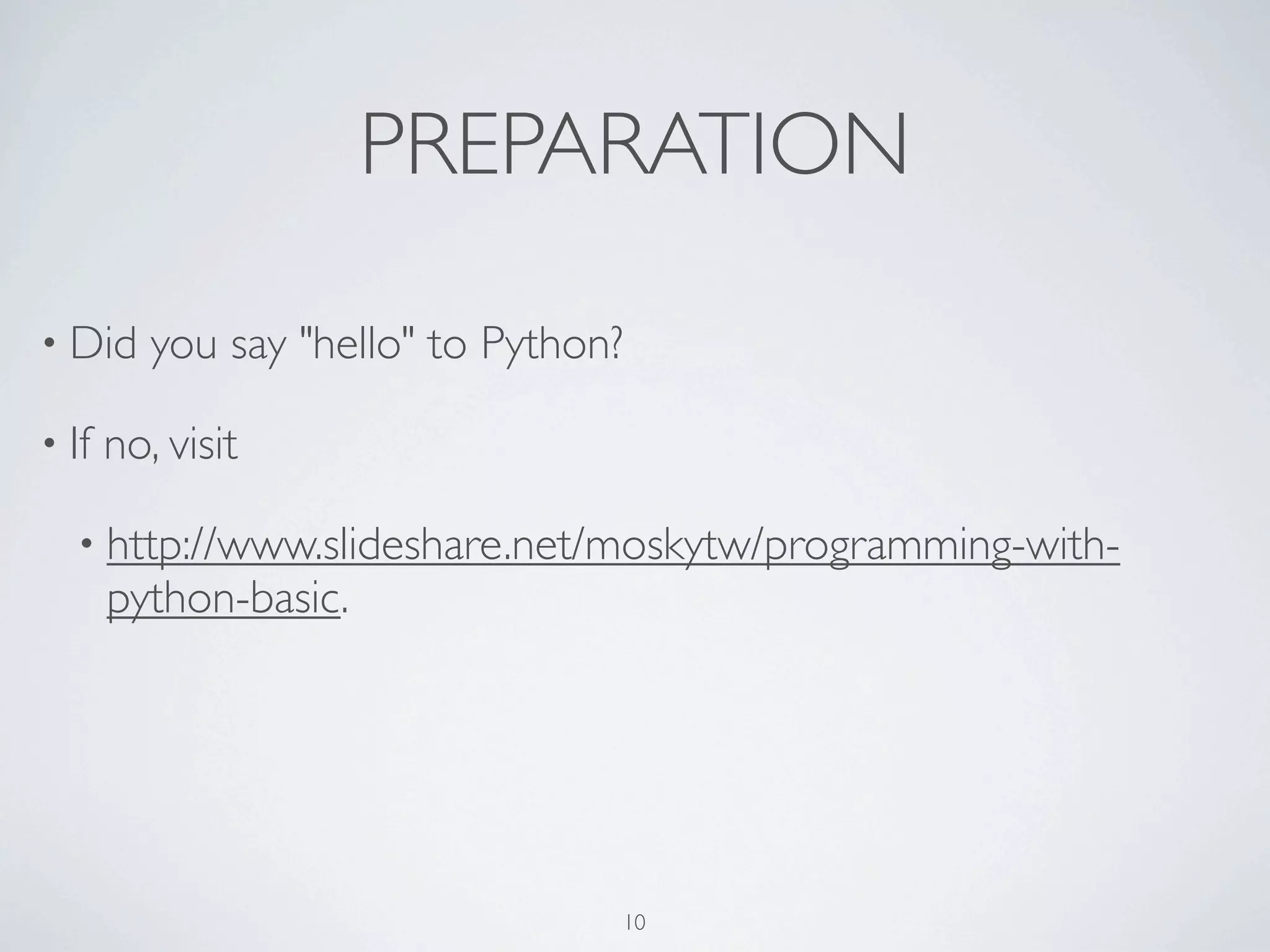
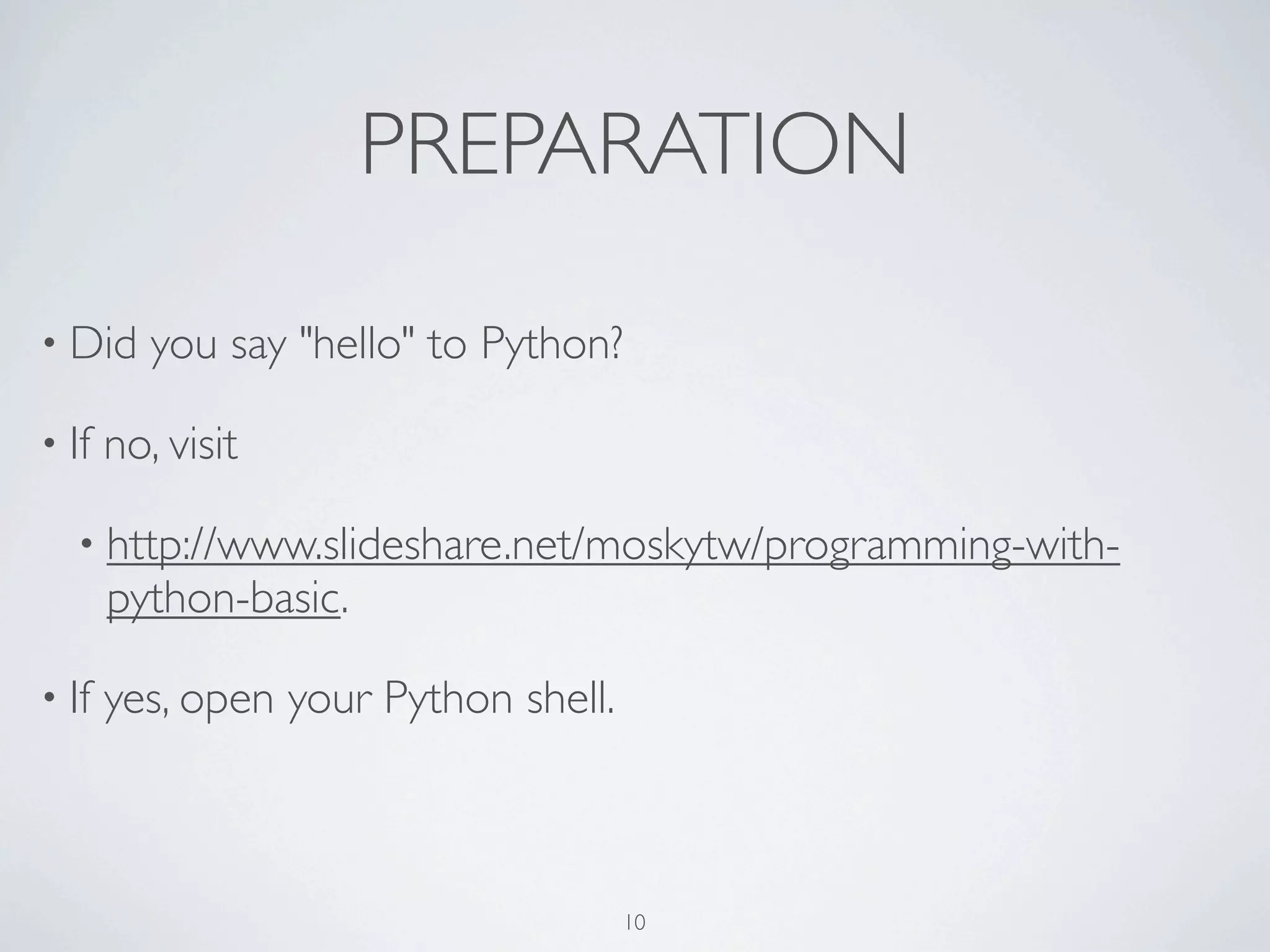


![FOR for i in [0, 1, 2, 3, 4]: print i ! items = [0, 1, 2, 3, 4] for i in items: print i ! for i in range(5): print i ! ! ! chars = 'SAHFI' for i, c in enumerate(chars): print i, c ! ! words = ('Samsung', 'Apple', 'HP', 'Foxconn', 'IBM') for c, w in zip(chars, words): print c, w 13](https://image.slidesharecdn.com/learning-python-from-data-public-130728195724-phpapp01/75/Learning-Python-from-Data-37-2048.jpg)

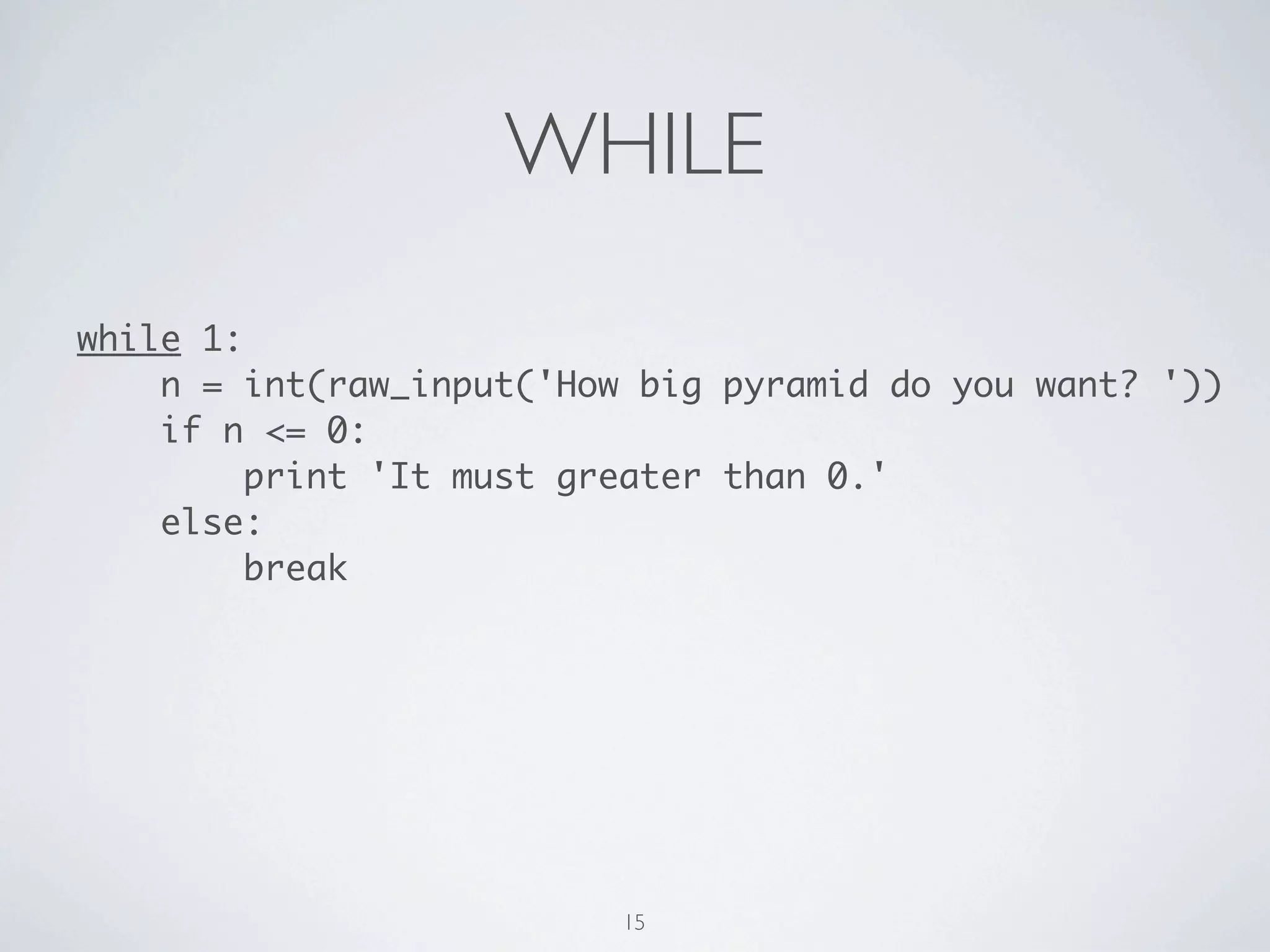
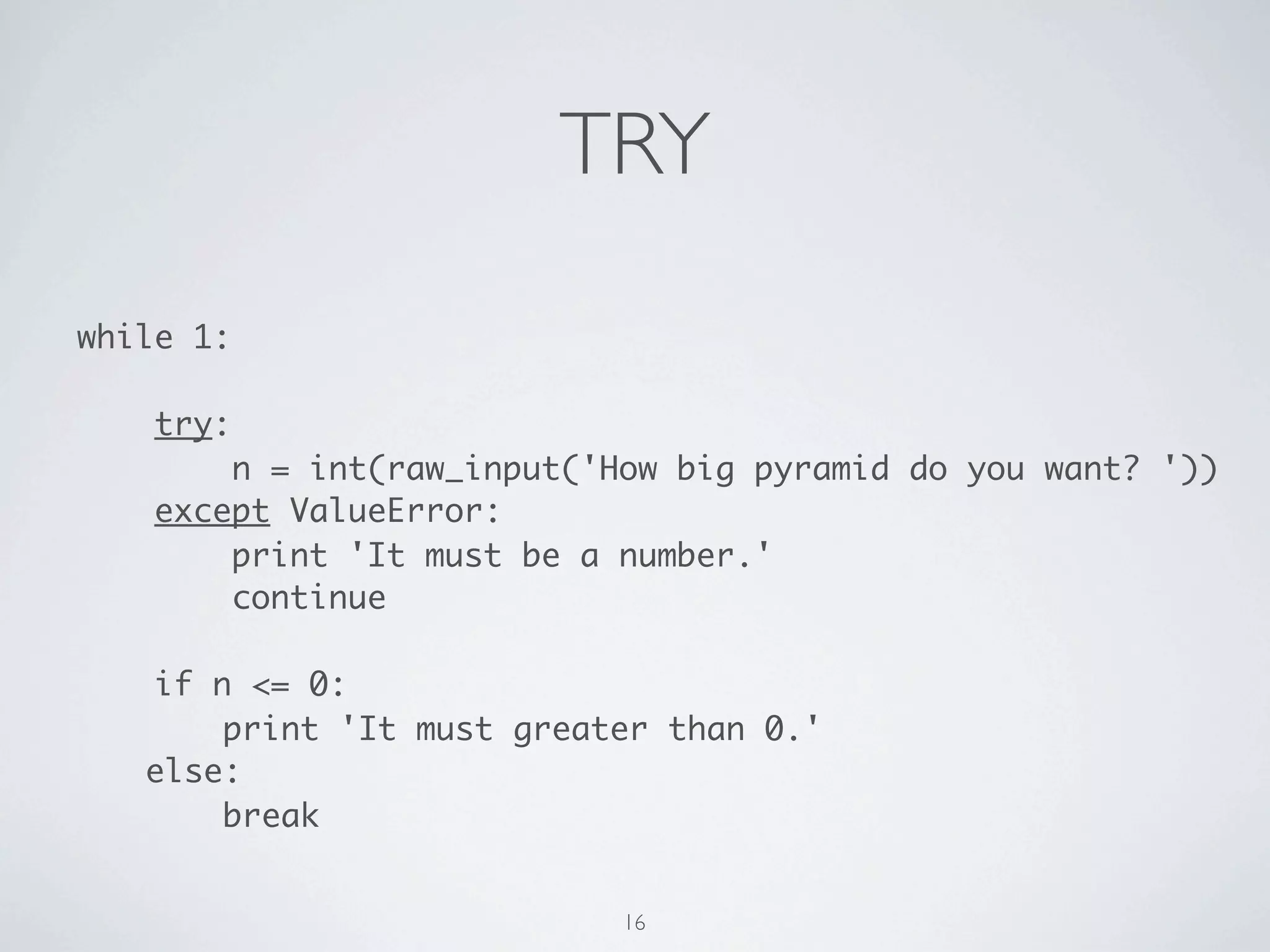
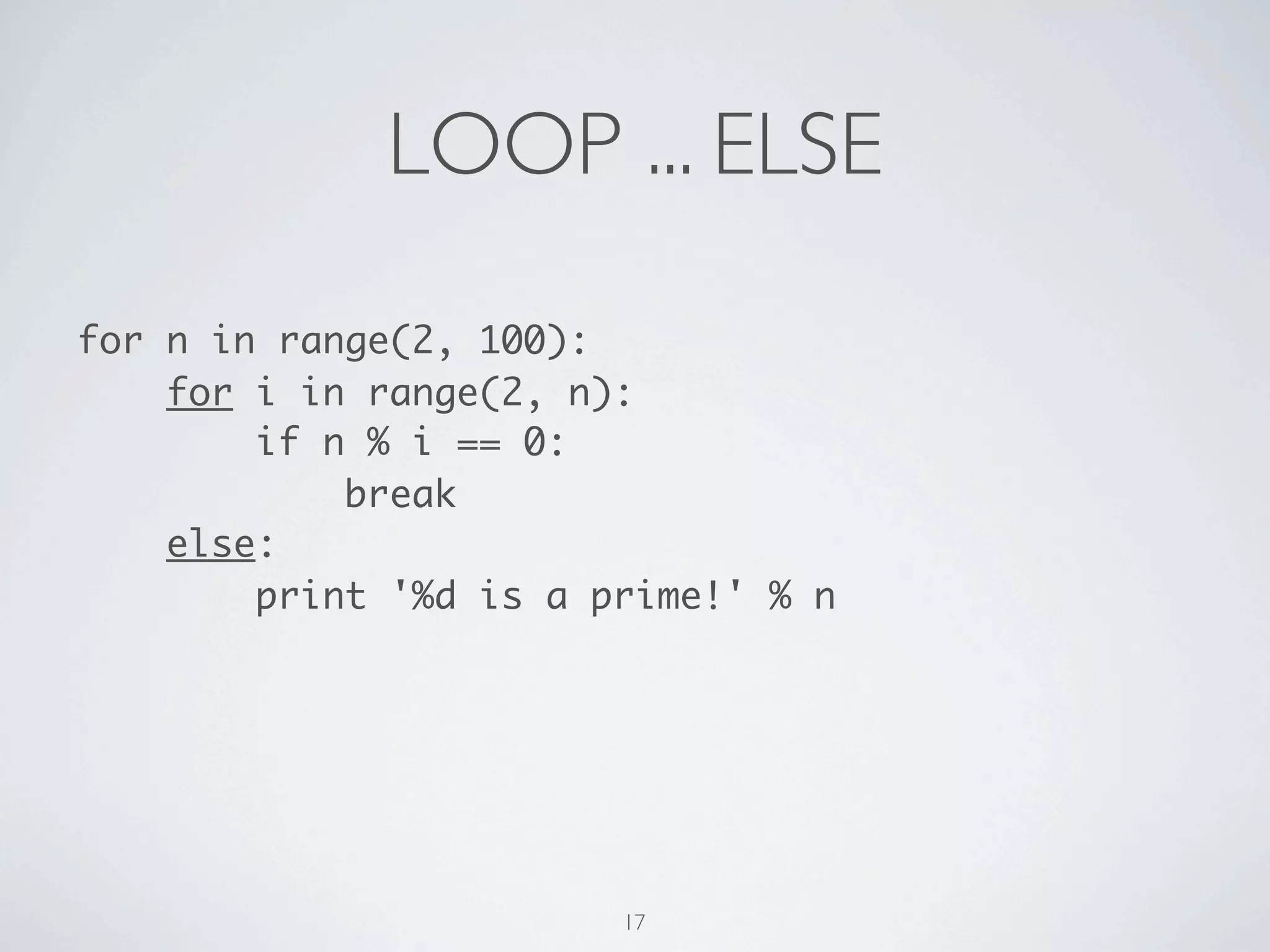



![LIST COMPREHENSION [ n for n in range(2, 100) if not any(n % i == 0 for i in range(2, n)) ] 21](https://image.slidesharecdn.com/learning-python-from-data-public-130728195724-phpapp01/75/Learning-Python-from-Data-45-2048.jpg)










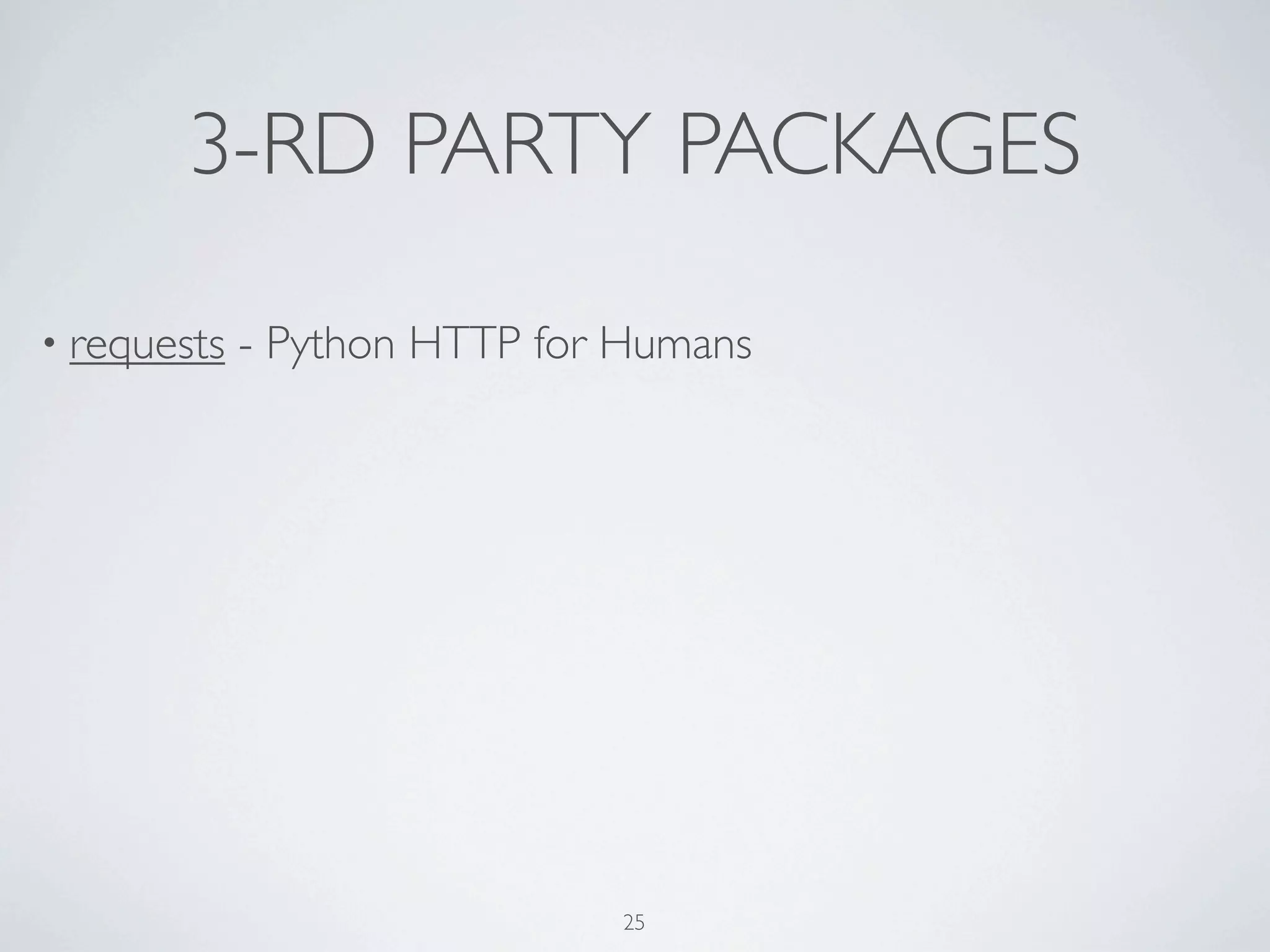
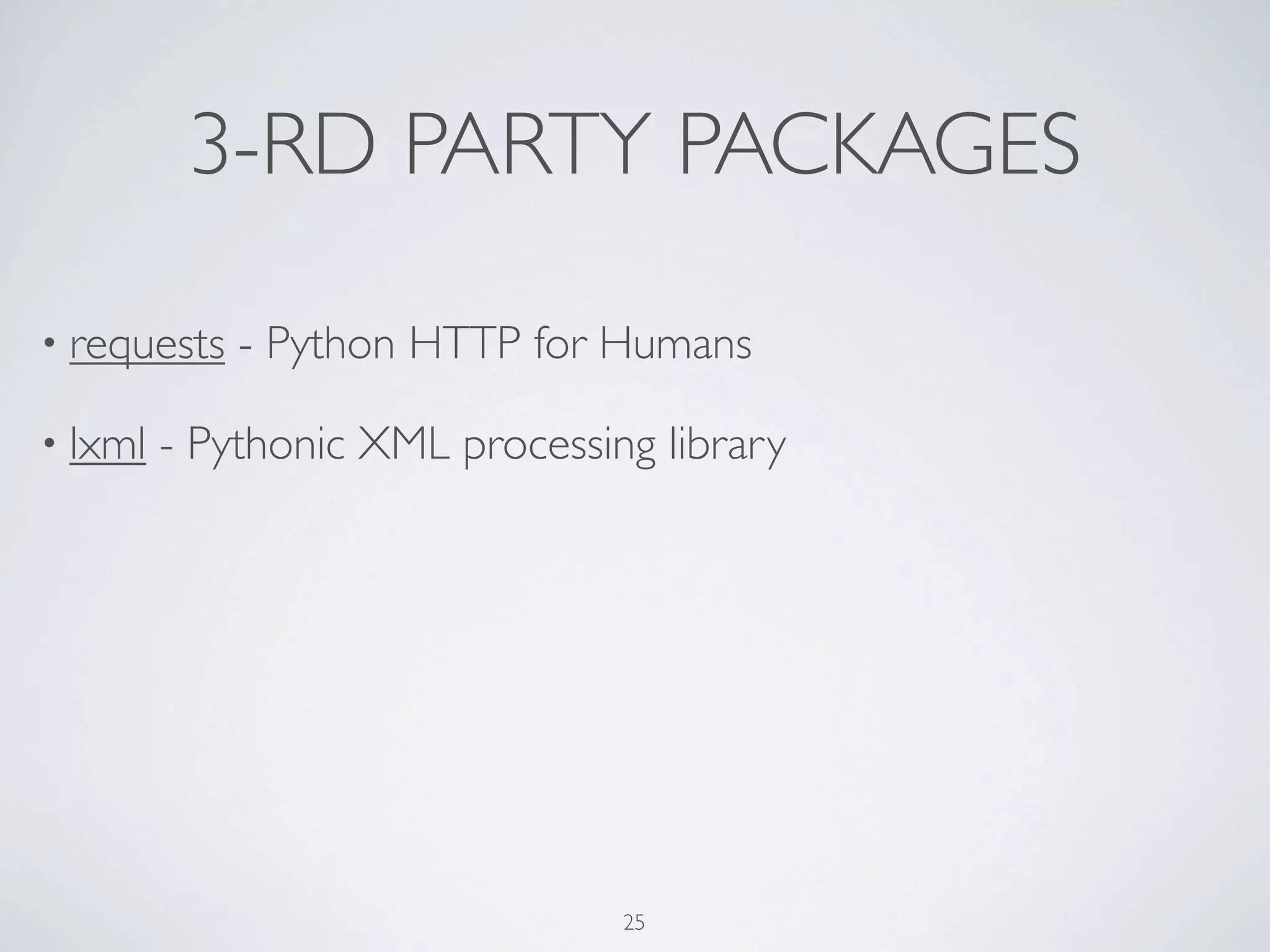
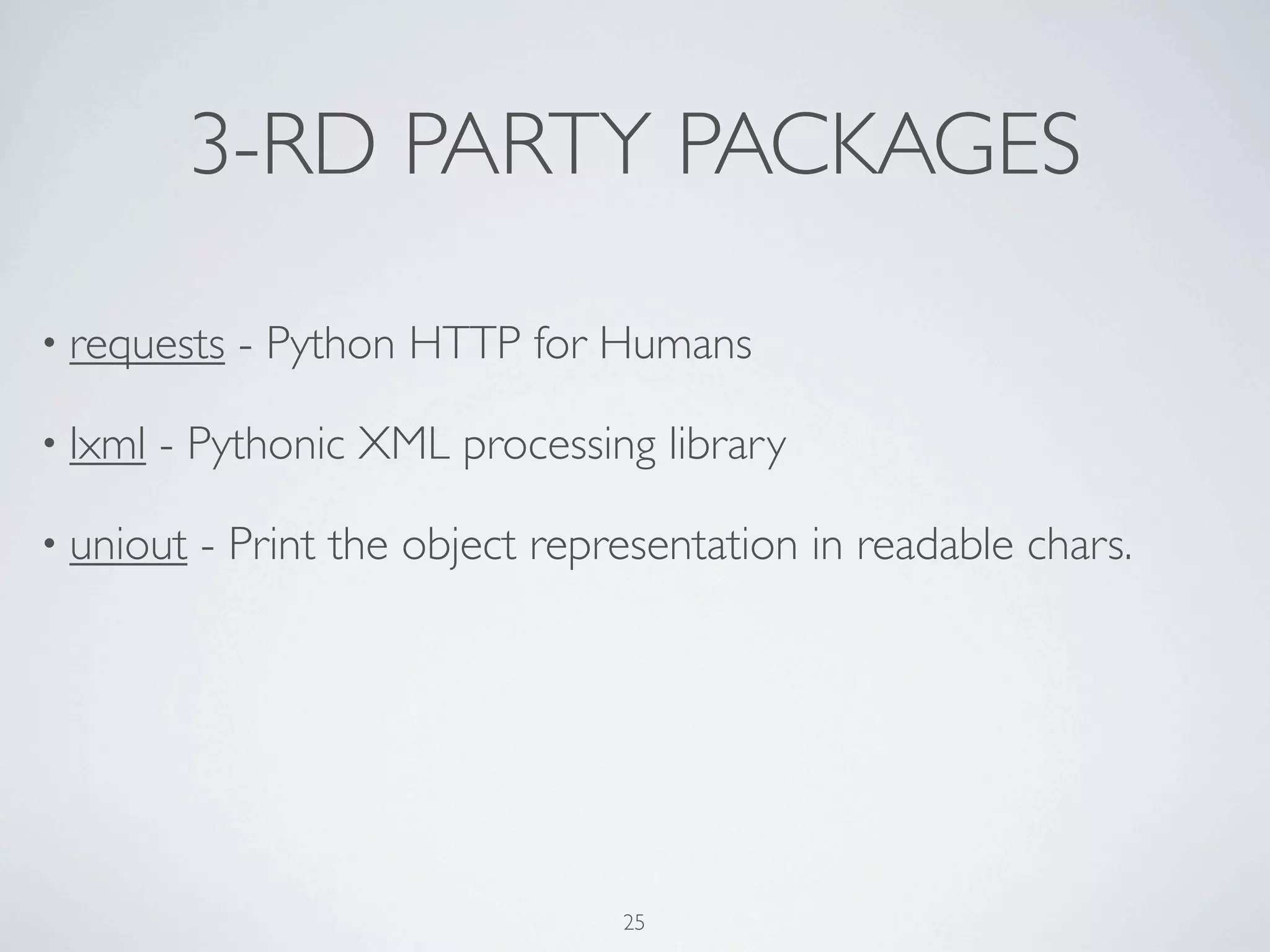
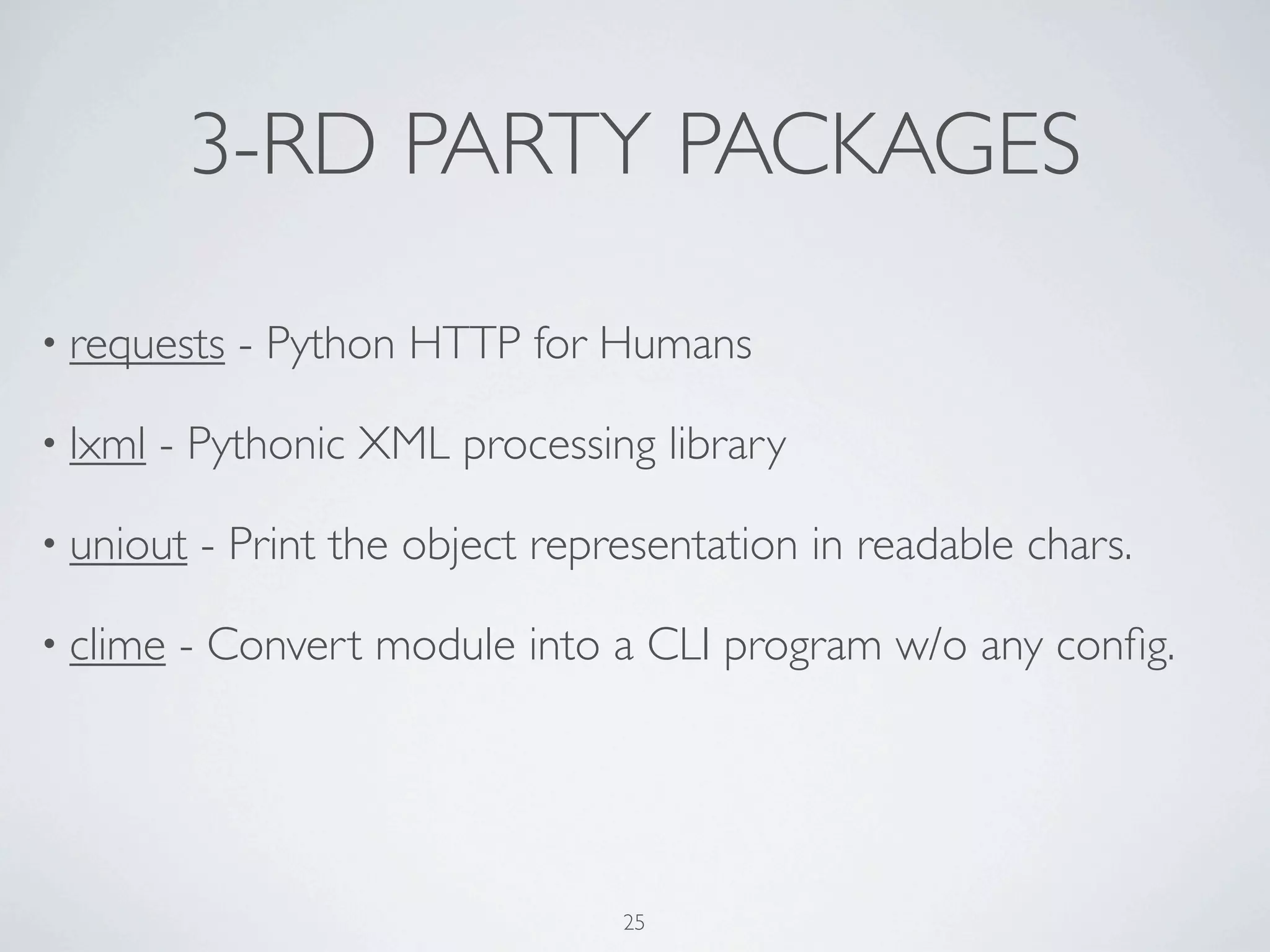

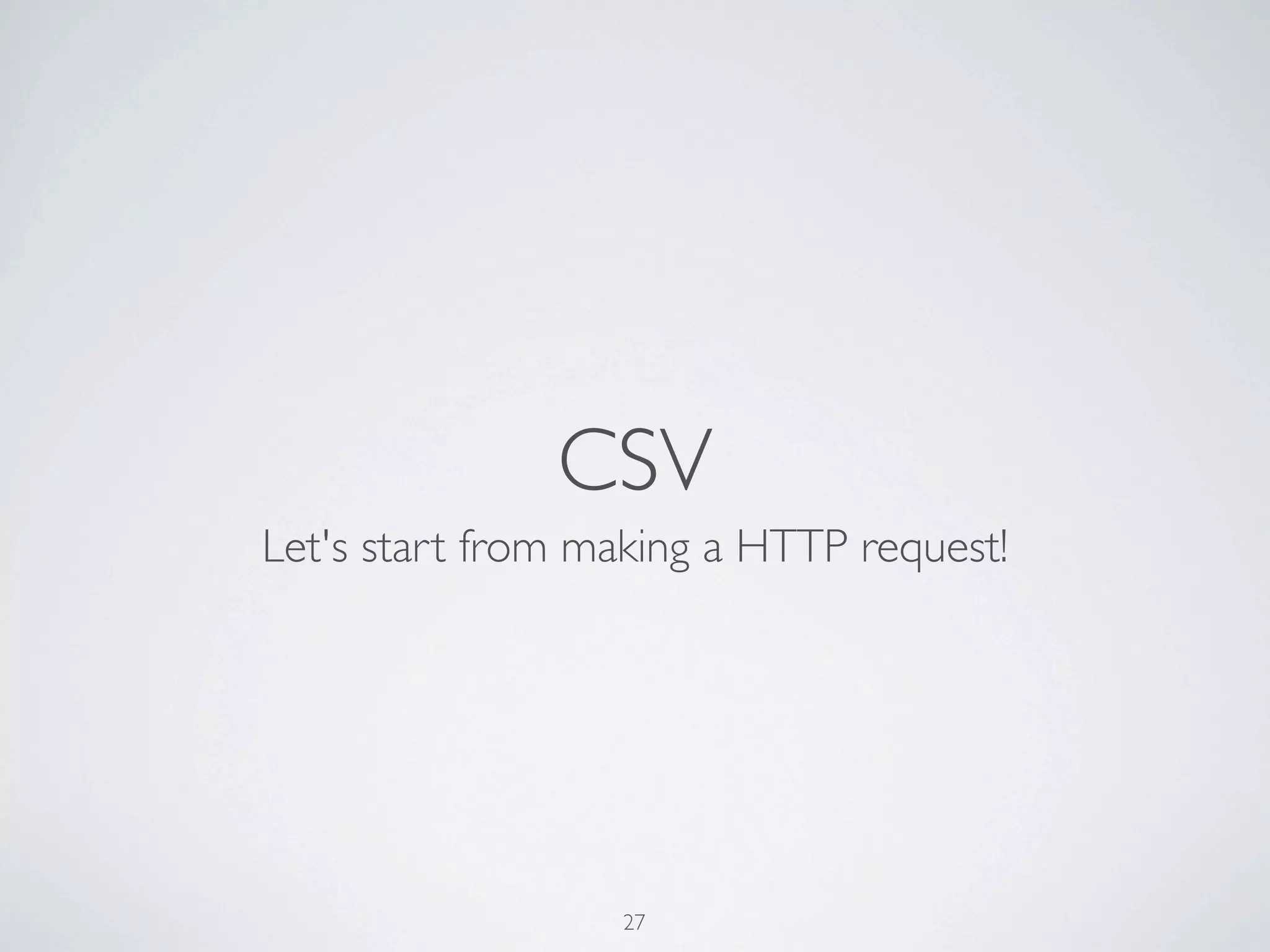
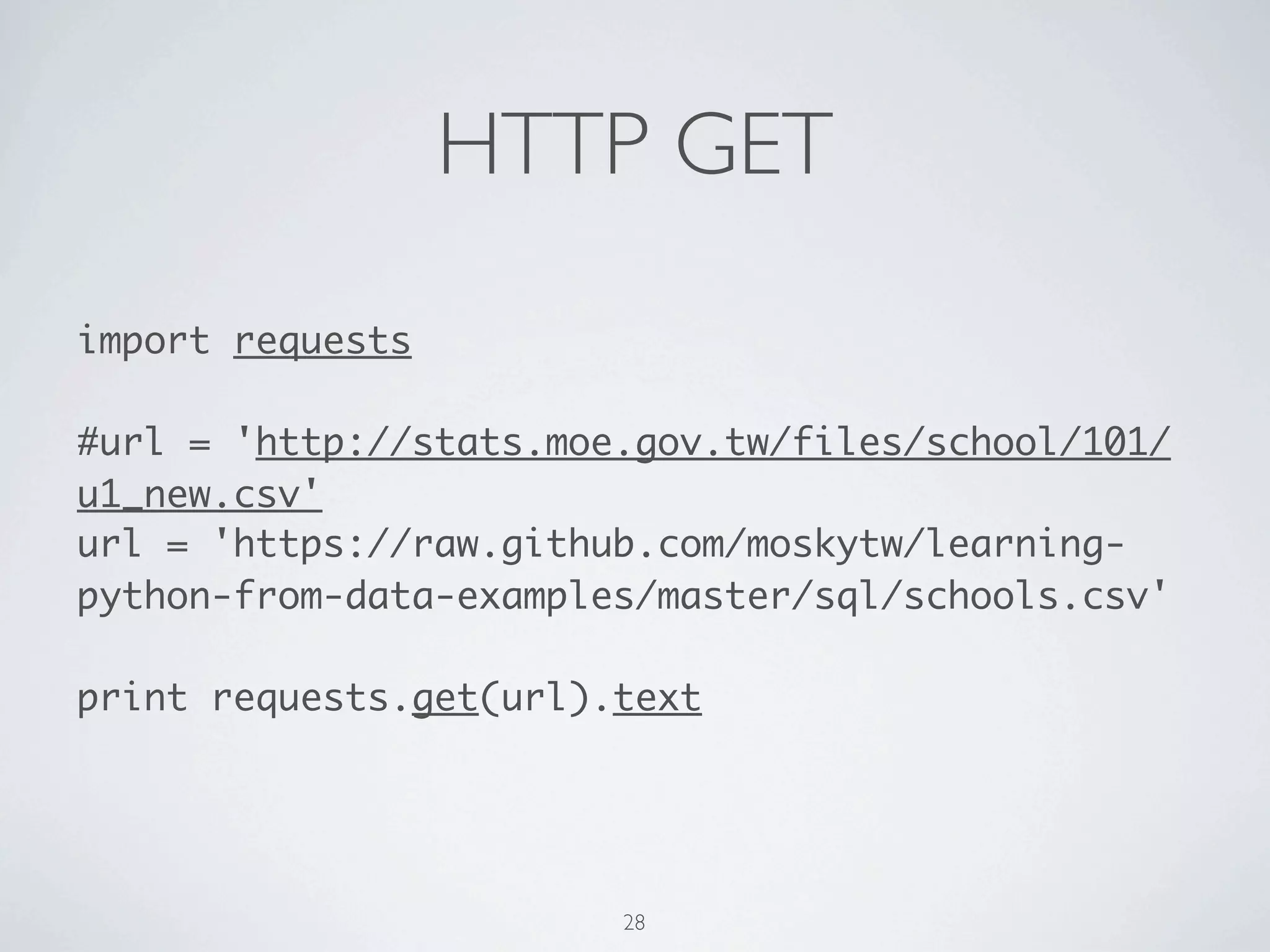


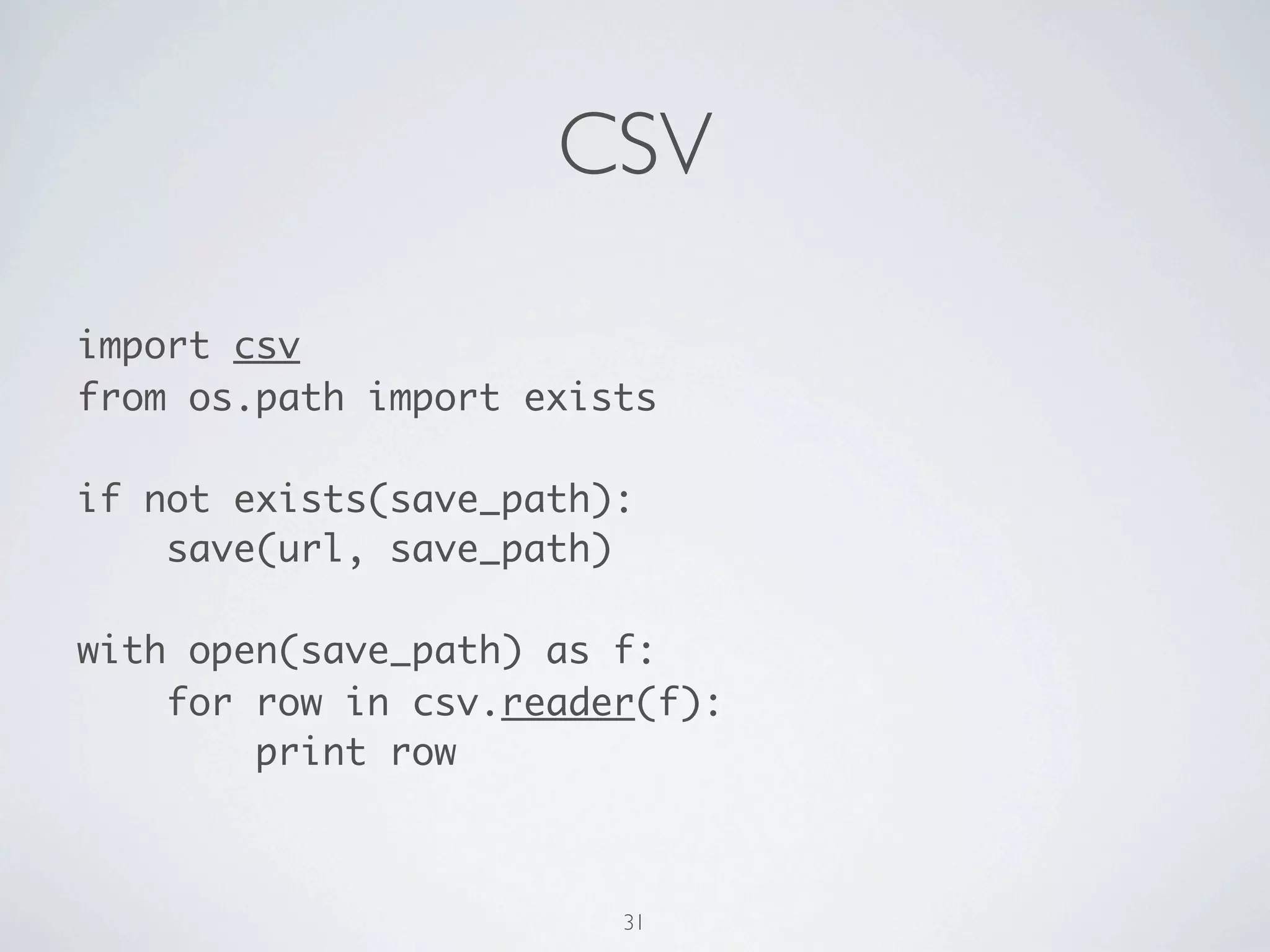

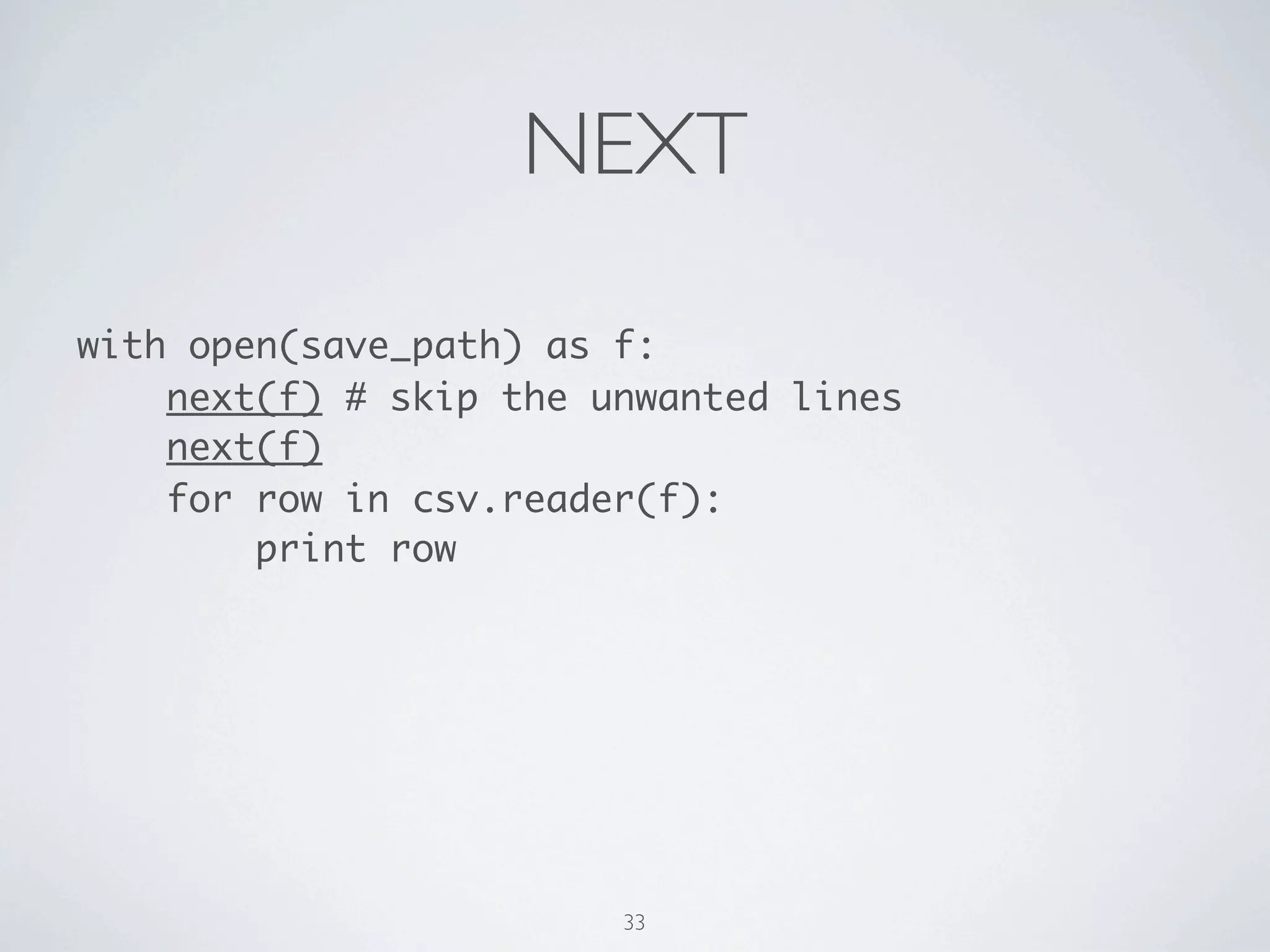
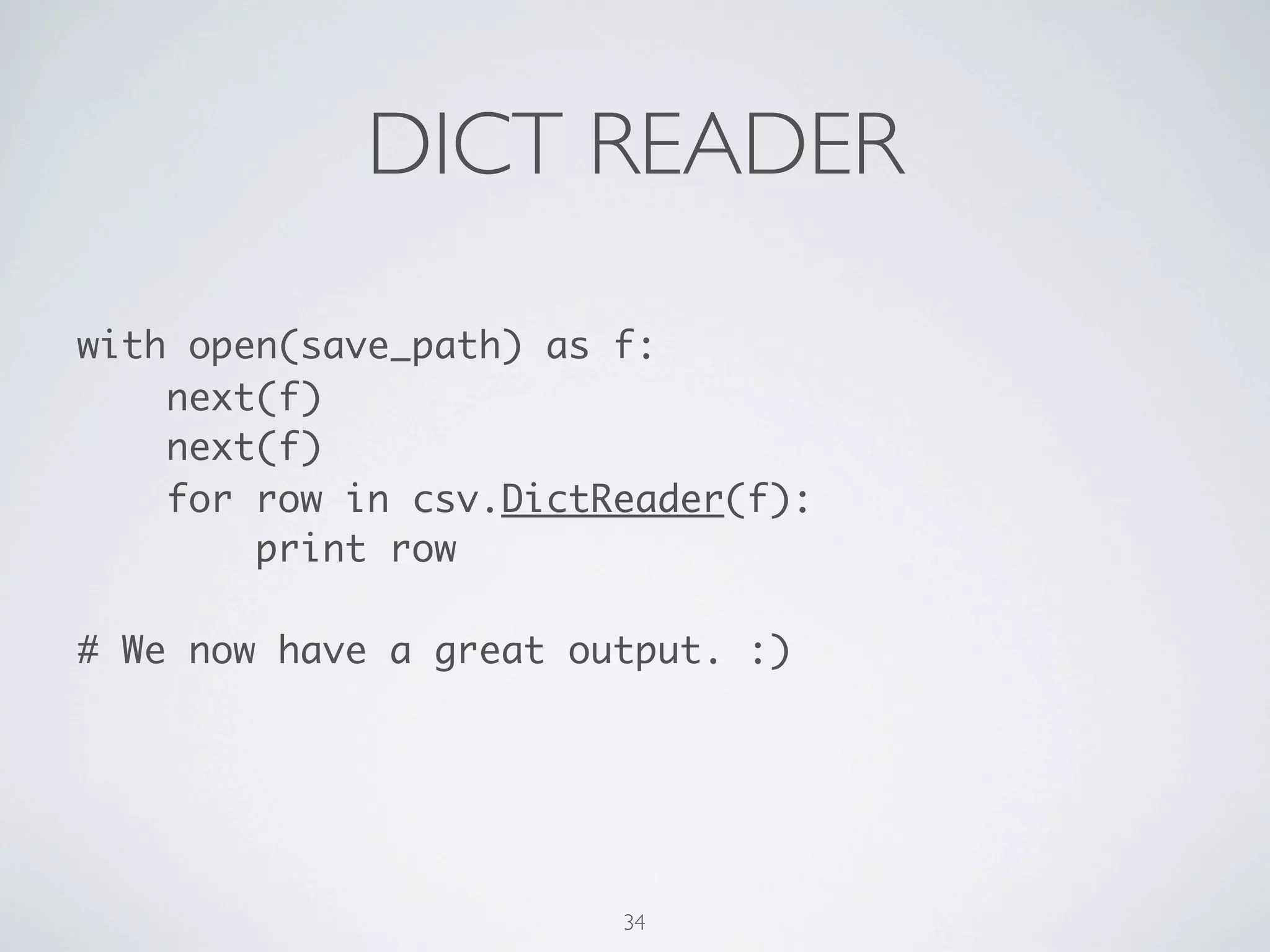
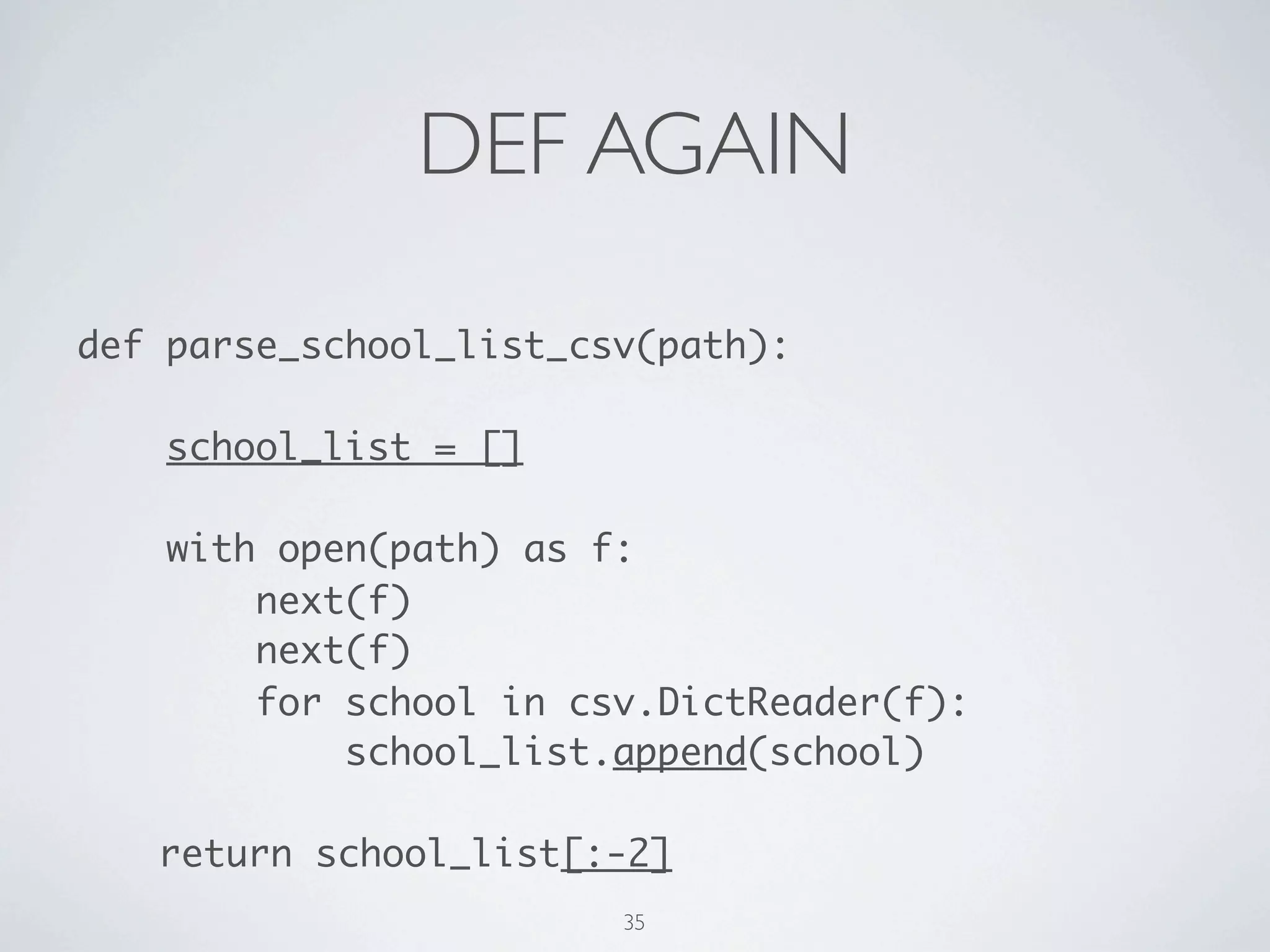
![DEF AGAIN def parse_to_school_list(path): school_list = [] with open(path) as f: next(f) next(f) for school in csv.DictReader(f): school_list.append(school) ! return school_list[:-2] 36](https://image.slidesharecdn.com/learning-python-from-data-public-130728195724-phpapp01/75/Learning-Python-from-Data-70-2048.jpg)
![+ COMPREHENSION def parse_to_school_list(path='schools.csv'): with open(path) as f: next(f) next(f) school_list = [school for school in csv.DictReader(f)][:-2] ! return school_list 37](https://image.slidesharecdn.com/learning-python-from-data-public-130728195724-phpapp01/75/Learning-Python-from-Data-71-2048.jpg)
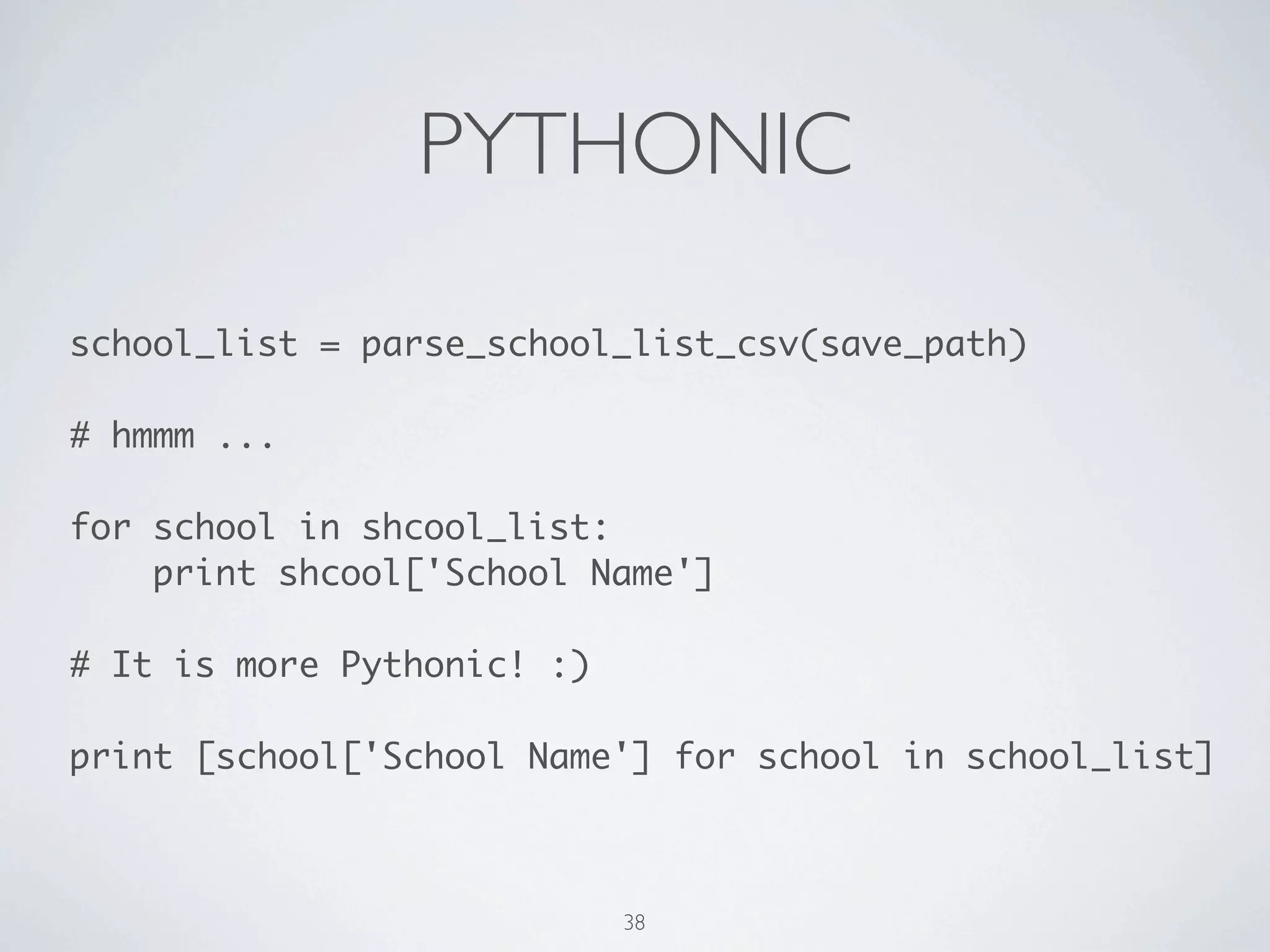
![PYTHONIC school_list = parse_to_school_list(save_path) ! # hmmm ... ! for school in shcool_list: print shcool['School Name'] ! # It is more Pythonic! :) ! print [school['School Name'] for school in school_list] 39](https://image.slidesharecdn.com/learning-python-from-data-public-130728195724-phpapp01/75/Learning-Python-from-Data-73-2048.jpg)
![GROUP BY from itertools import groupby ! # You MUST sort it. keyfunc = lambda school: school['County'] school_list.sort(key=keyfunc) ! for county, schools in groupby(school_list, keyfunc): for school in schools: print '%s %r' % (county, school) print '---' 40](https://image.slidesharecdn.com/learning-python-from-data-public-130728195724-phpapp01/75/Learning-Python-from-Data-74-2048.jpg)
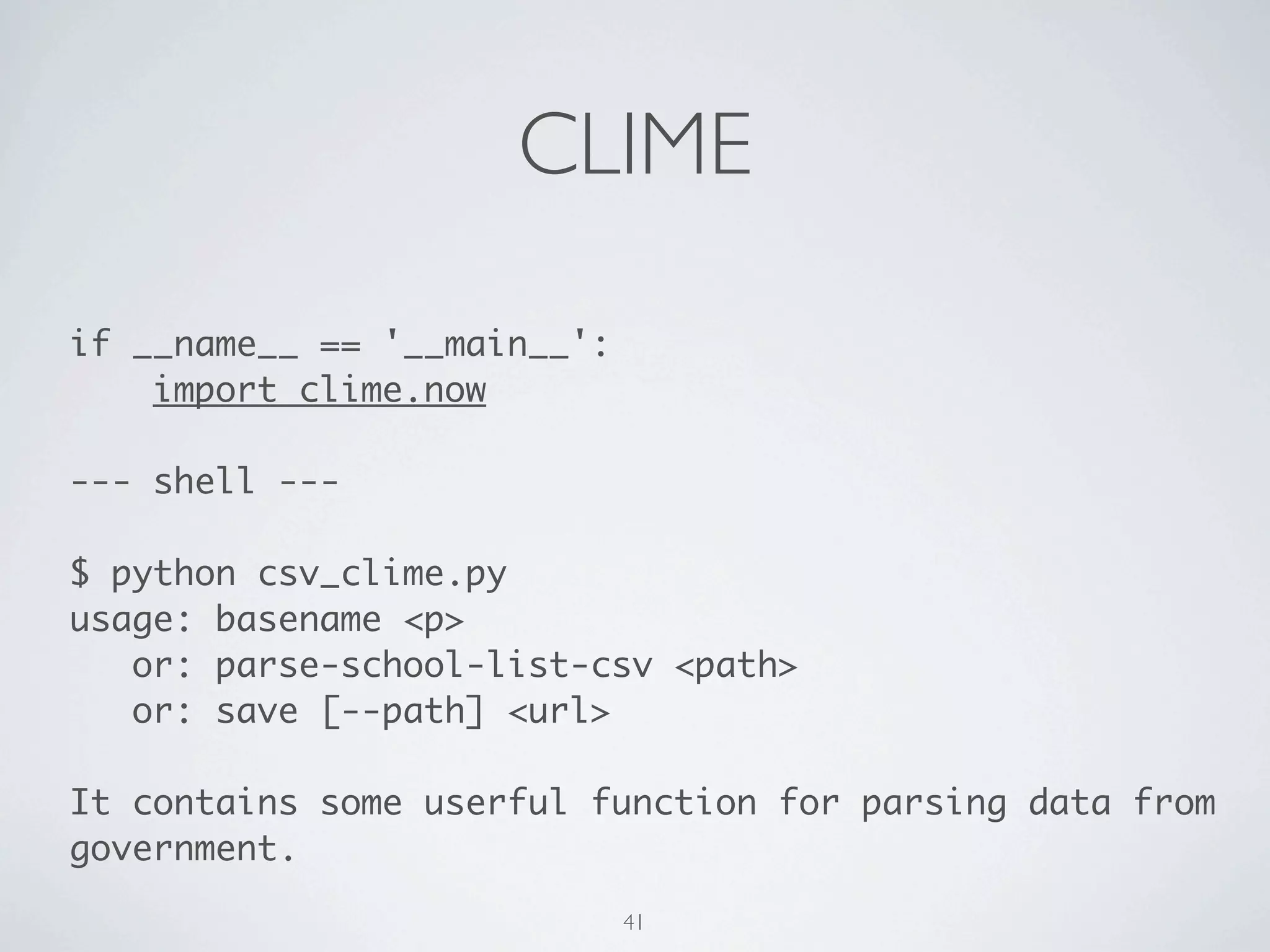
![CLIME if __name__ == '__main__': import clime.now ! --- shell --- ! $ python csv_clime.py usage: basename <p> or: parse-to-school-list <path> or: save [--path] <url> ! It contains some userful function for parsing data from government. 42](https://image.slidesharecdn.com/learning-python-from-data-public-130728195724-phpapp01/75/Learning-Python-from-Data-76-2048.jpg)


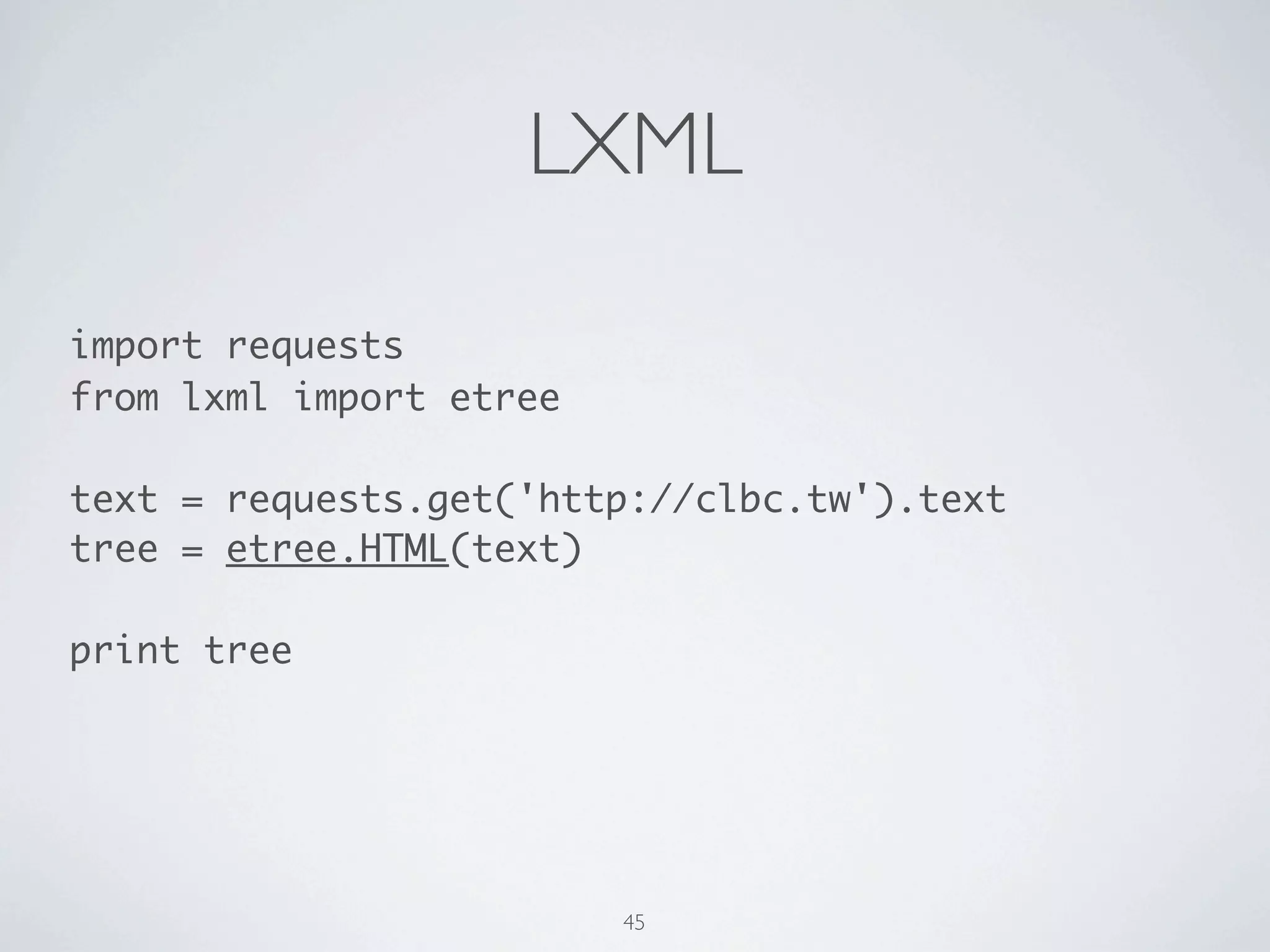
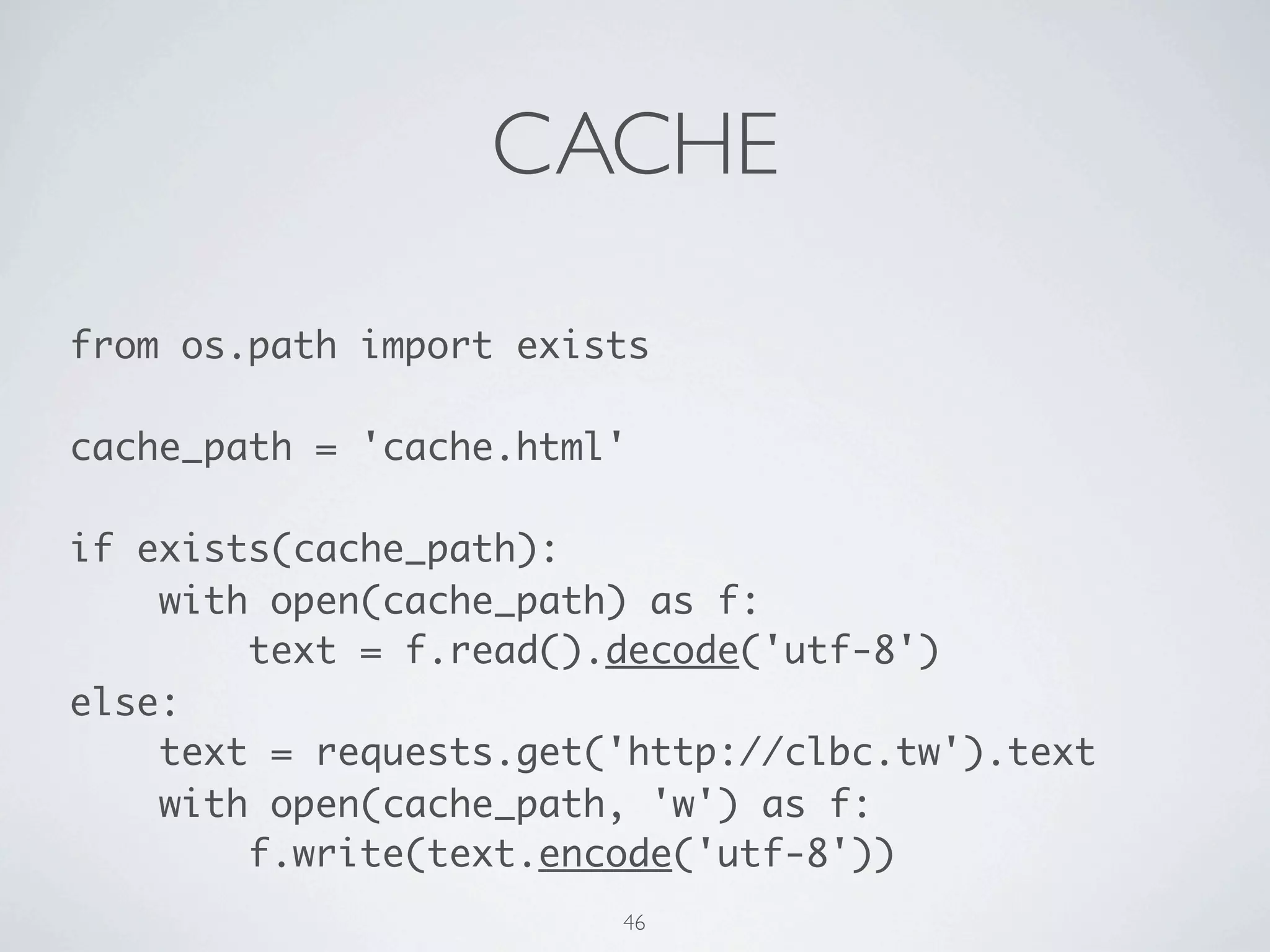
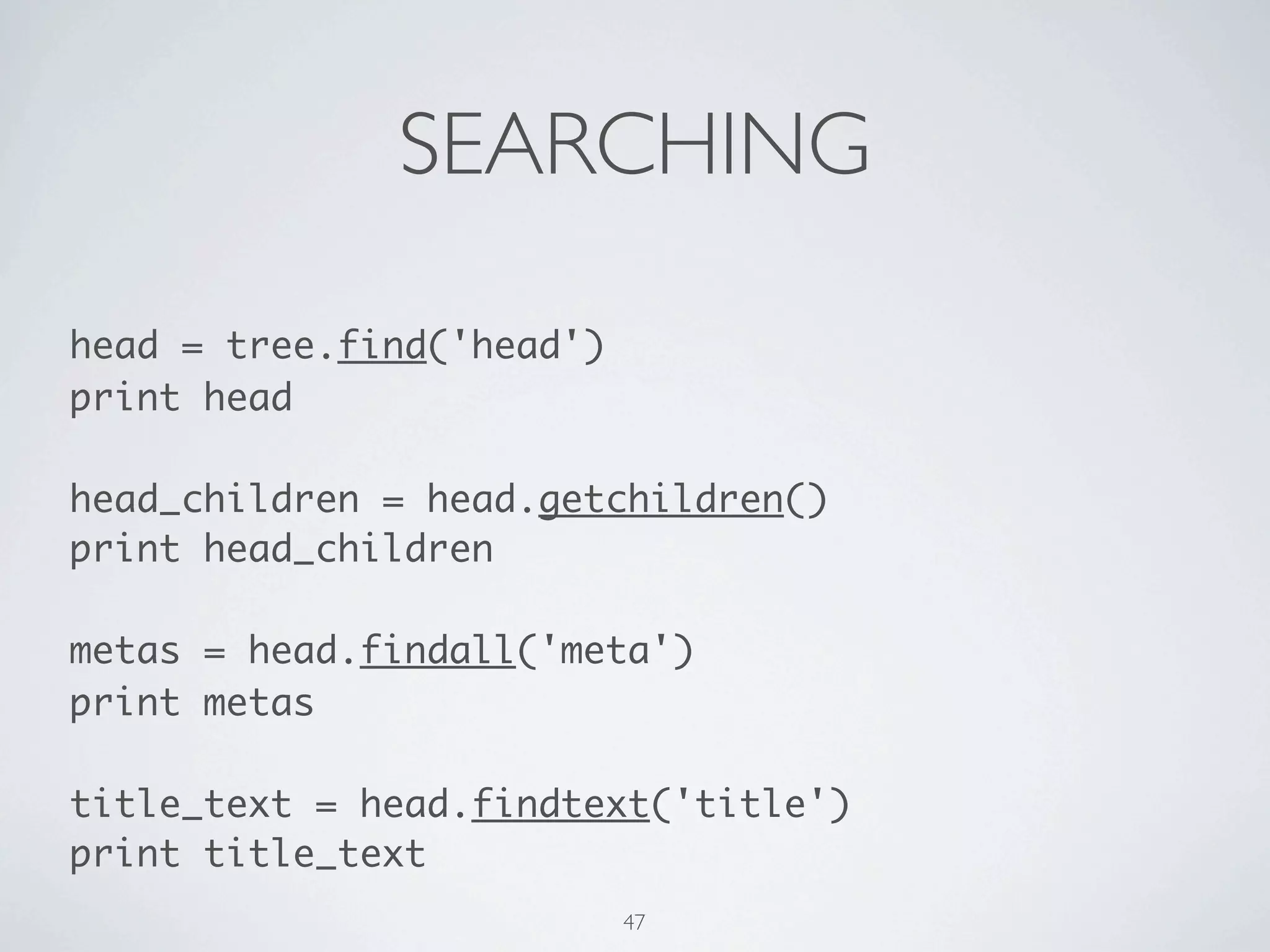

![XPATH titles = root.xpath('/html/head/title') print titles[0].text ! title_texts = root.xpath('/html/head/title/text()') print title_texts[0] ! as_ = root.xpath('//a') print as_ print [a.get('href') for a in as_] 49](https://image.slidesharecdn.com/learning-python-from-data-public-130728195724-phpapp01/75/Learning-Python-from-Data-83-2048.jpg)


![DEF FIND_URLS def find_urls(content): root = etree.HTML(content) return [ a.attrib['href'] for a in root.xpath('//a') if 'href' in a.attrib ] 52](https://image.slidesharecdn.com/learning-python-from-data-public-130728195724-phpapp01/75/Learning-Python-from-Data-86-2048.jpg)
![BFS 1/2 NEW = 0 QUEUED = 1 VISITED = 2 ! def search_urls(url): ! url_queue = [url] url_state_map = {url: QUEUED} ! while url_queue: ! url = url_queue.pop(0) print url 53](https://image.slidesharecdn.com/learning-python-from-data-public-130728195724-phpapp01/75/Learning-Python-from-Data-87-2048.jpg)
![BFS 2/2 # continue the previous page try: found_urls = find_urls(get(url)) except Exception, e: url_state_map[url] = e print 'Exception: %s' % e except KeyboardInterrupt, e: return url_state_map else: for found_url in found_urls: if not url_state_map.get(found_url, NEW): url_queue.append(found_url) url_state_map[found_url] = QUEUED url_state_map[url] = VISITED 54](https://image.slidesharecdn.com/learning-python-from-data-public-130728195724-phpapp01/75/Learning-Python-from-Data-88-2048.jpg)
![DEQUE from collections import deque ... ! def search_urls(url): url_queue = deque([url]) ... while url_queue: ! url = url_queue.popleft() print url ... 55](https://image.slidesharecdn.com/learning-python-from-data-public-130728195724-phpapp01/75/Learning-Python-from-Data-89-2048.jpg)


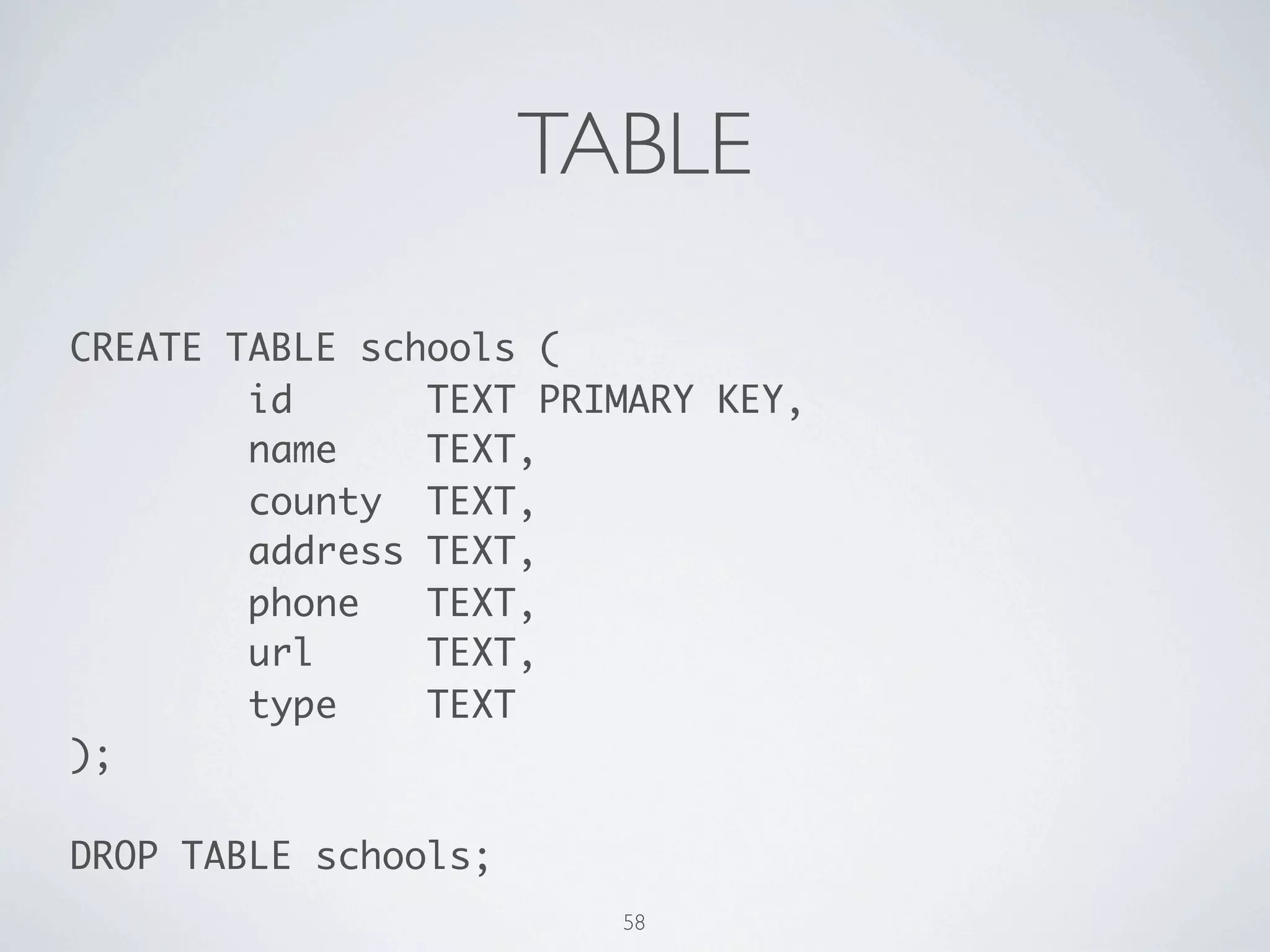
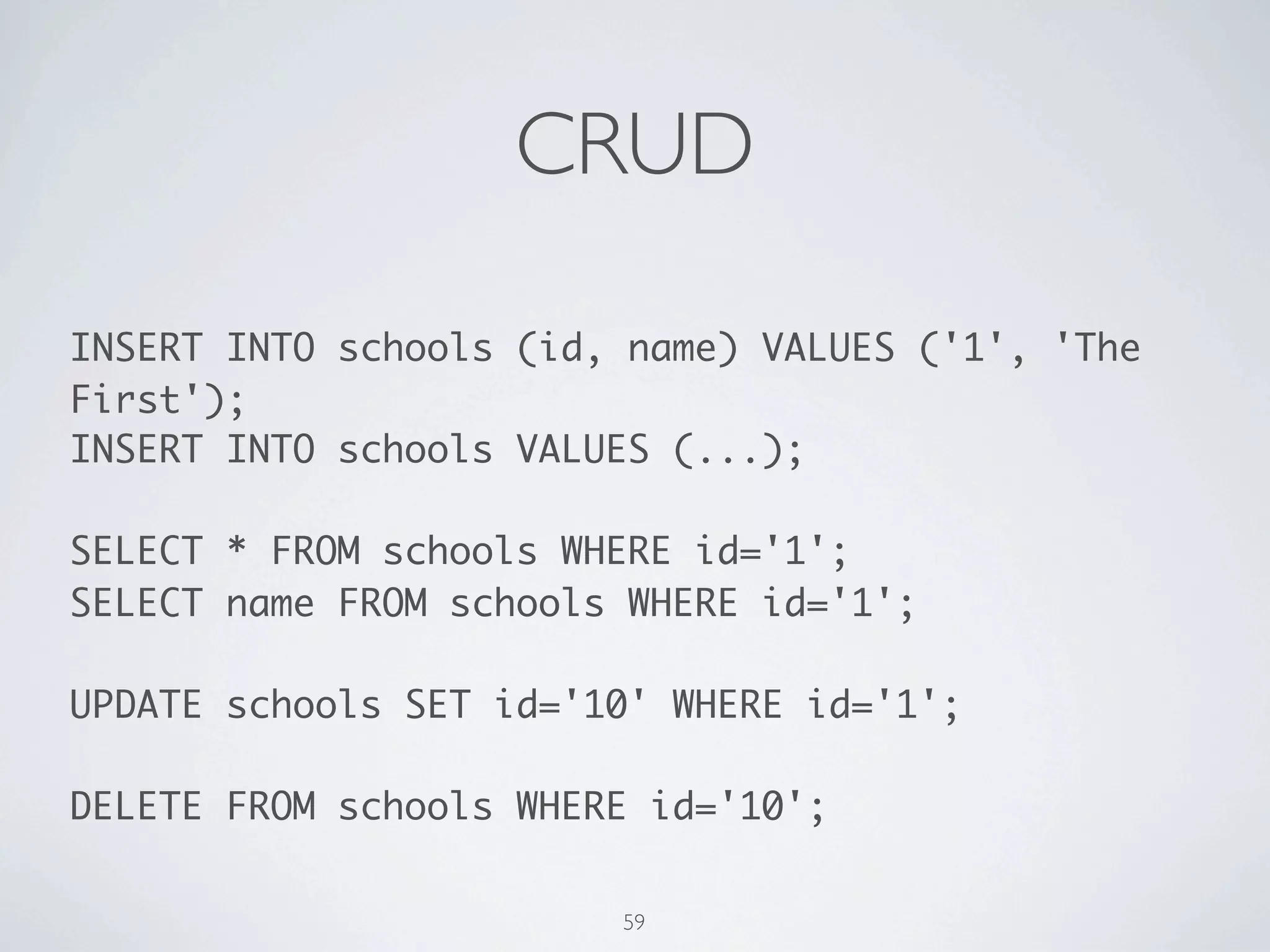
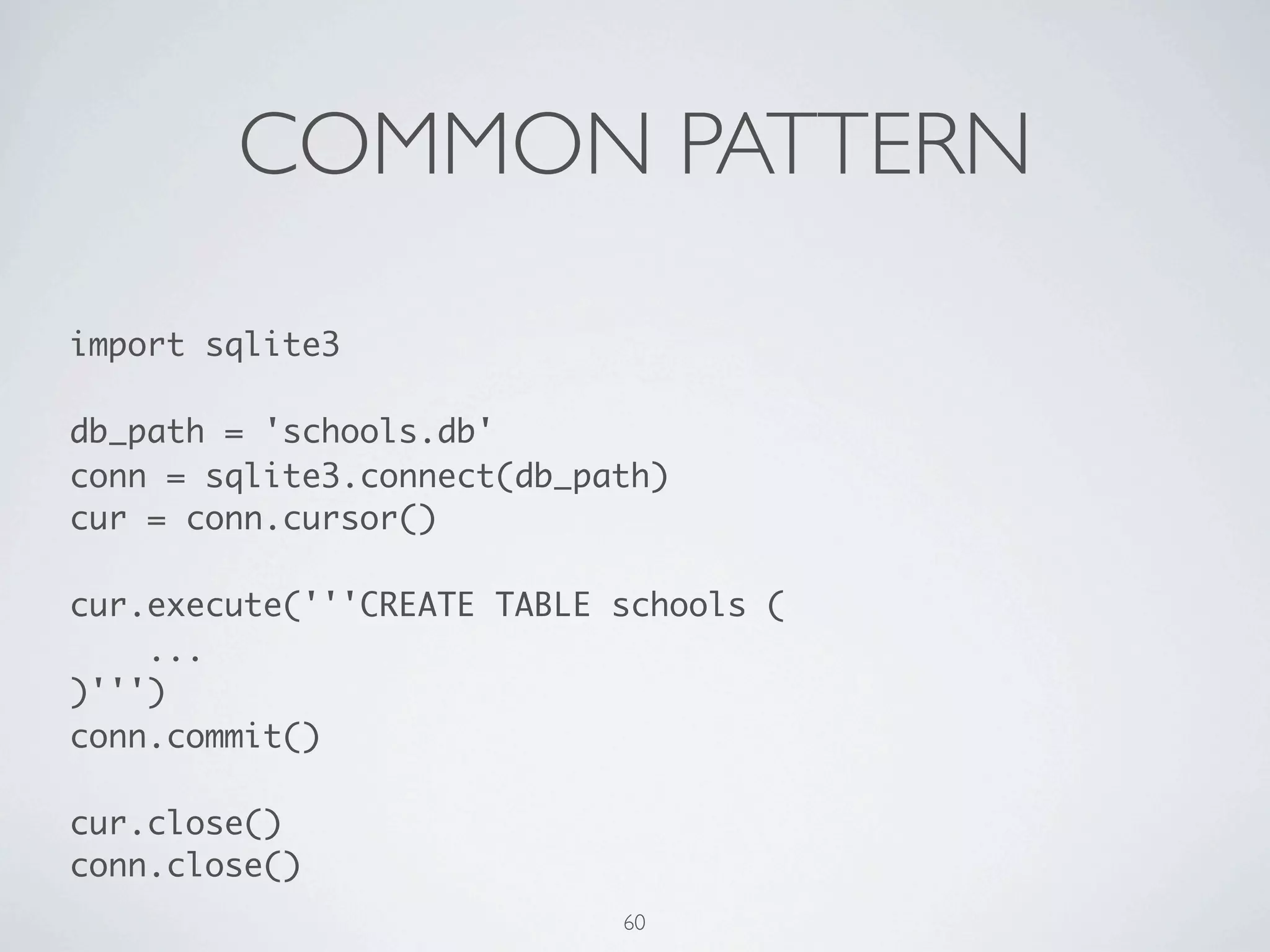
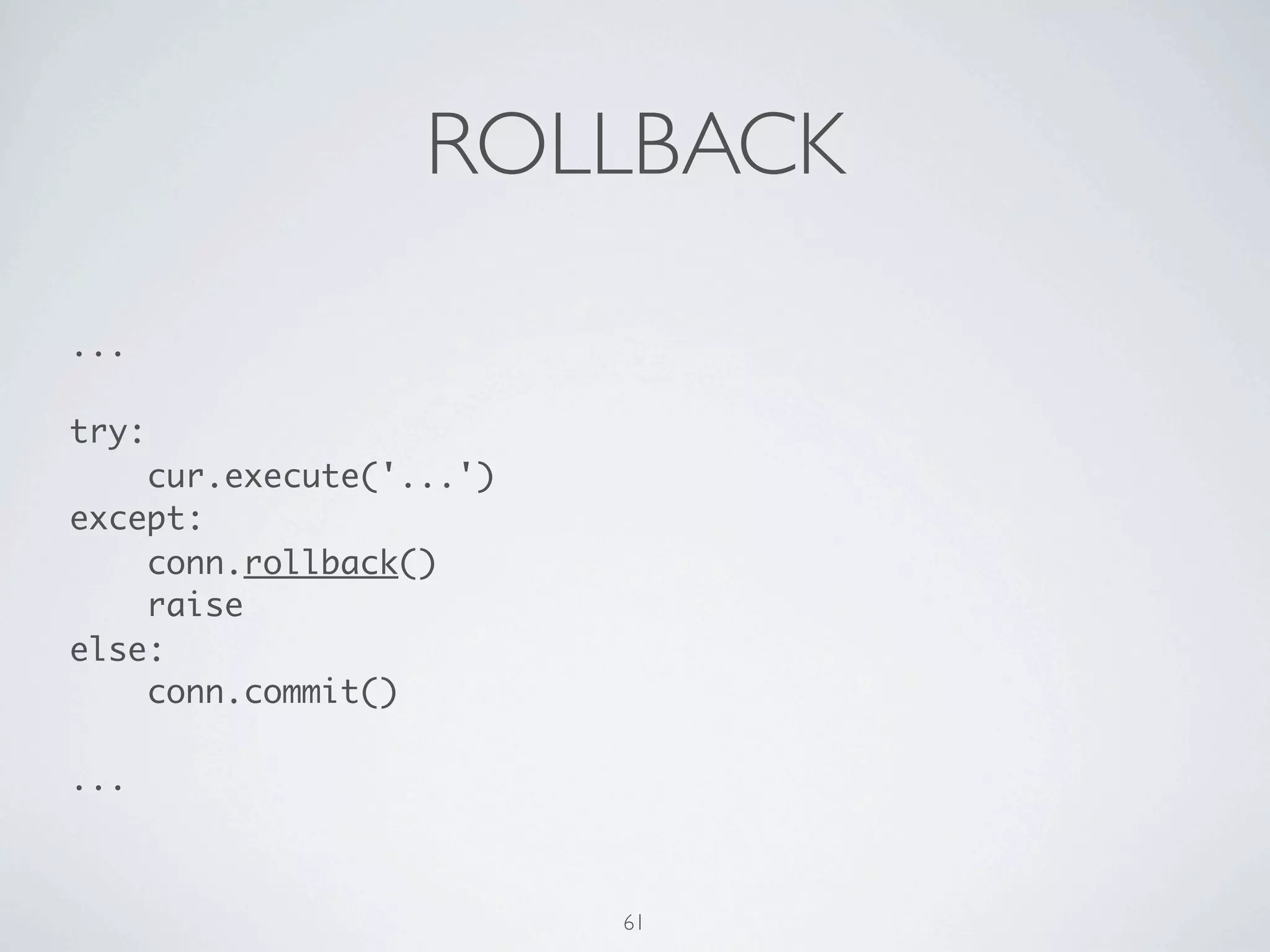
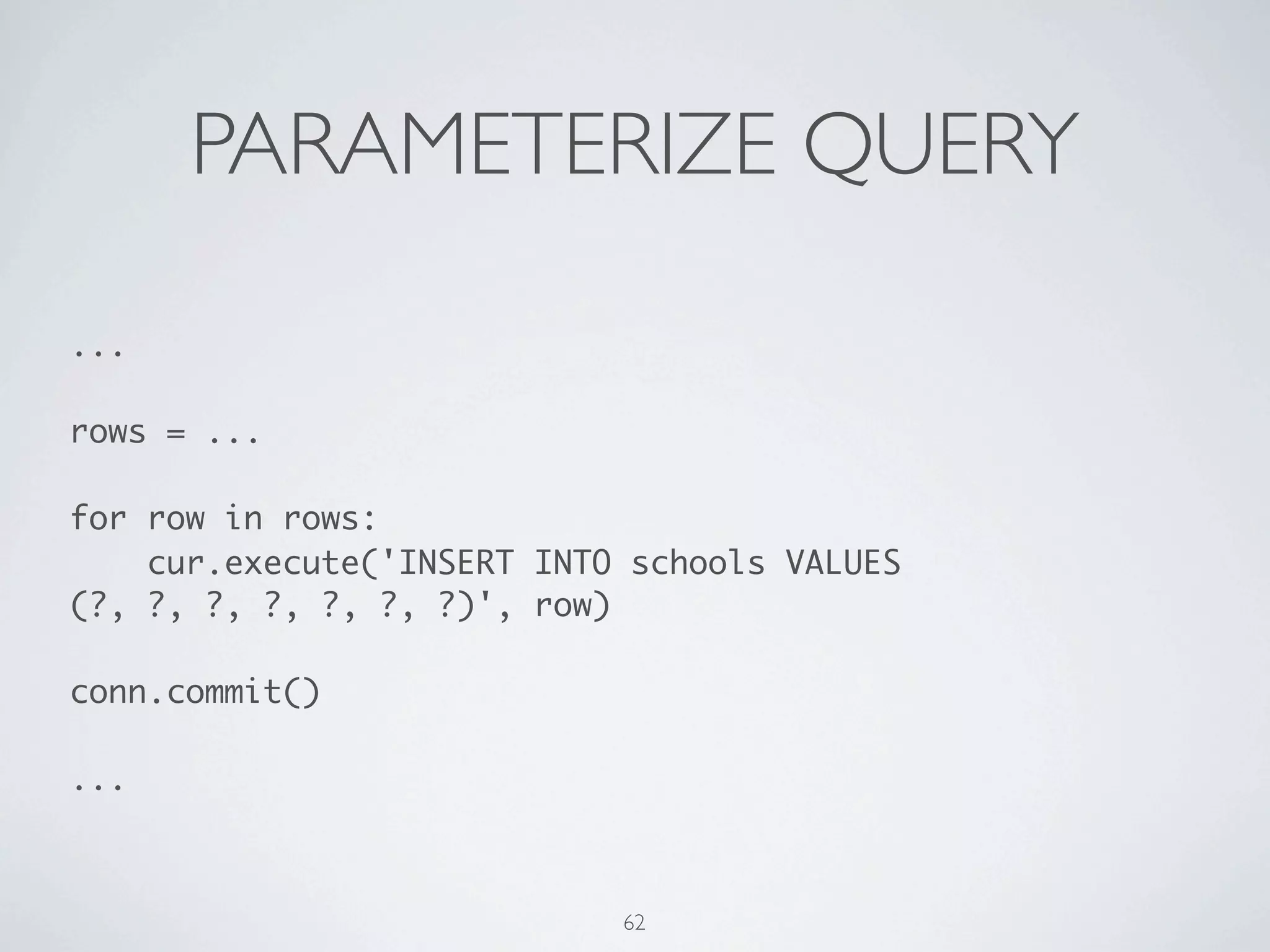



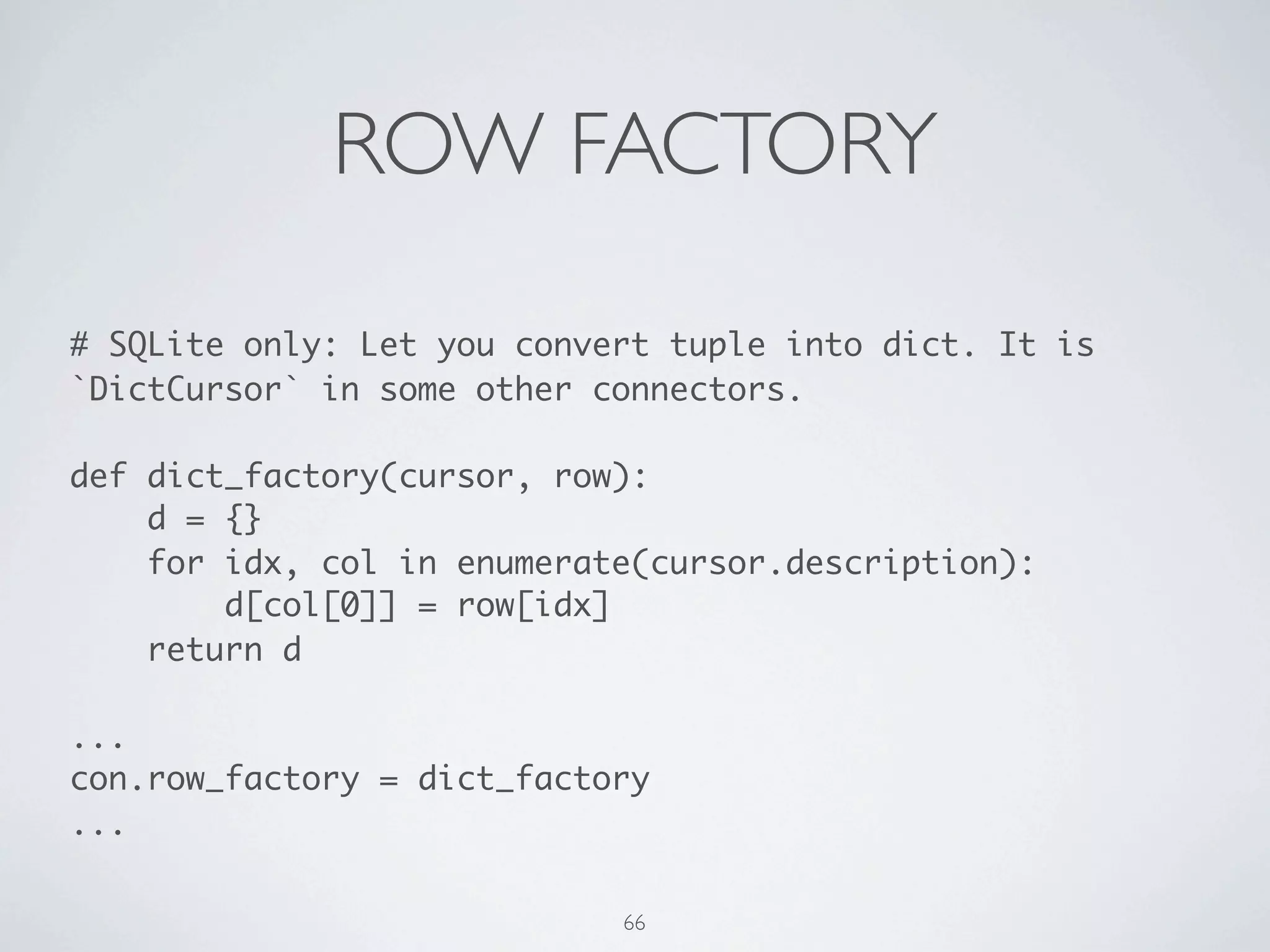
![ROW FACTORY # SQLite only: Let you convert tuple into dict. It is `DictCursor` in some other connectors. ! def dict_factory(cursor, row): d = {} for idx, col in enumerate(cursor.description): d[col[0]] = row[idx] return d ! ... con.row_factory = dict_factory ... 67](https://image.slidesharecdn.com/learning-python-from-data-public-130728195724-phpapp01/75/Learning-Python-from-Data-101-2048.jpg)

